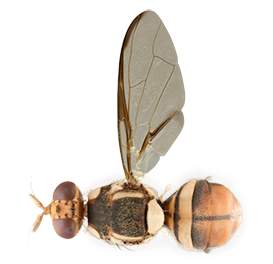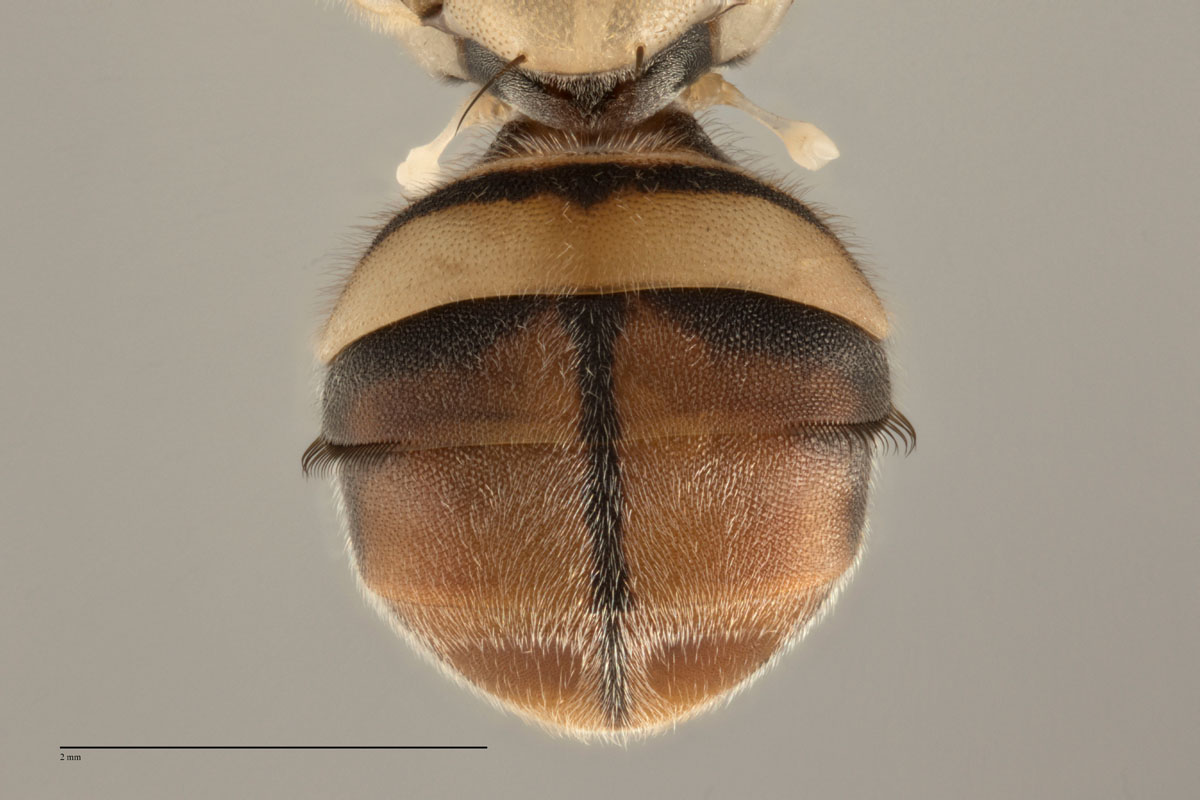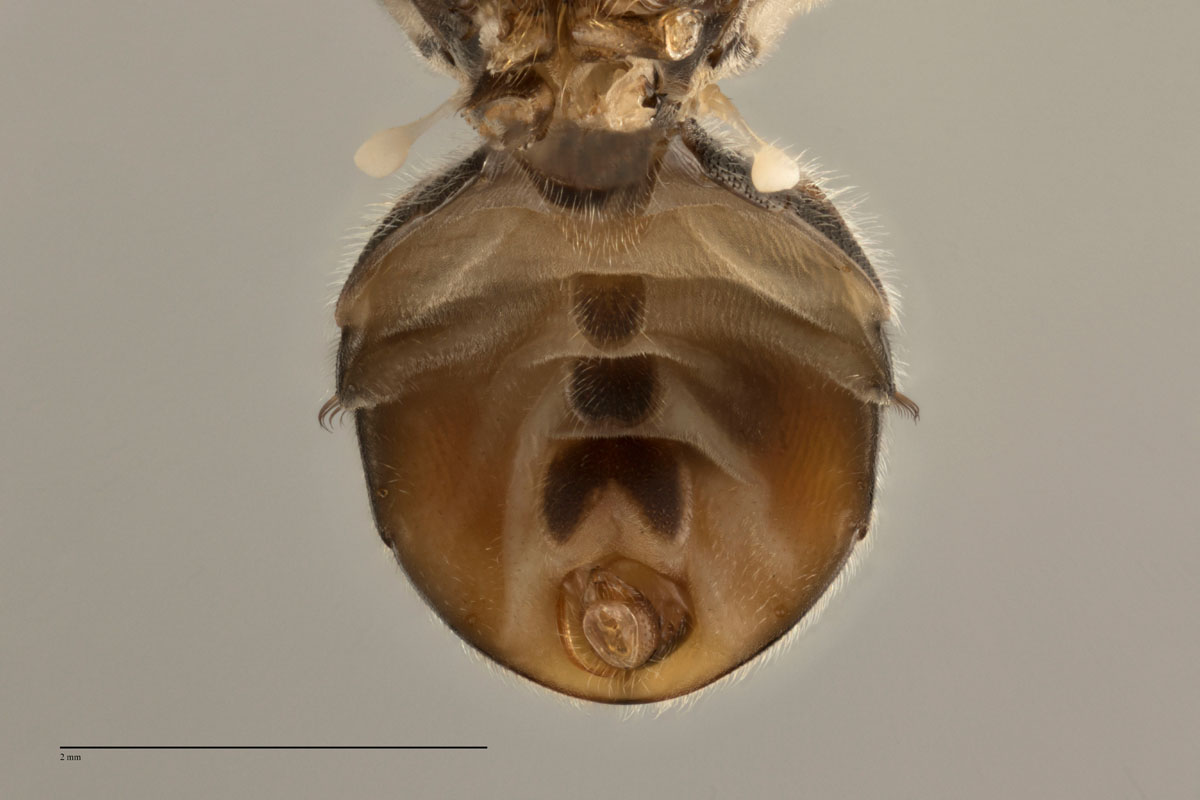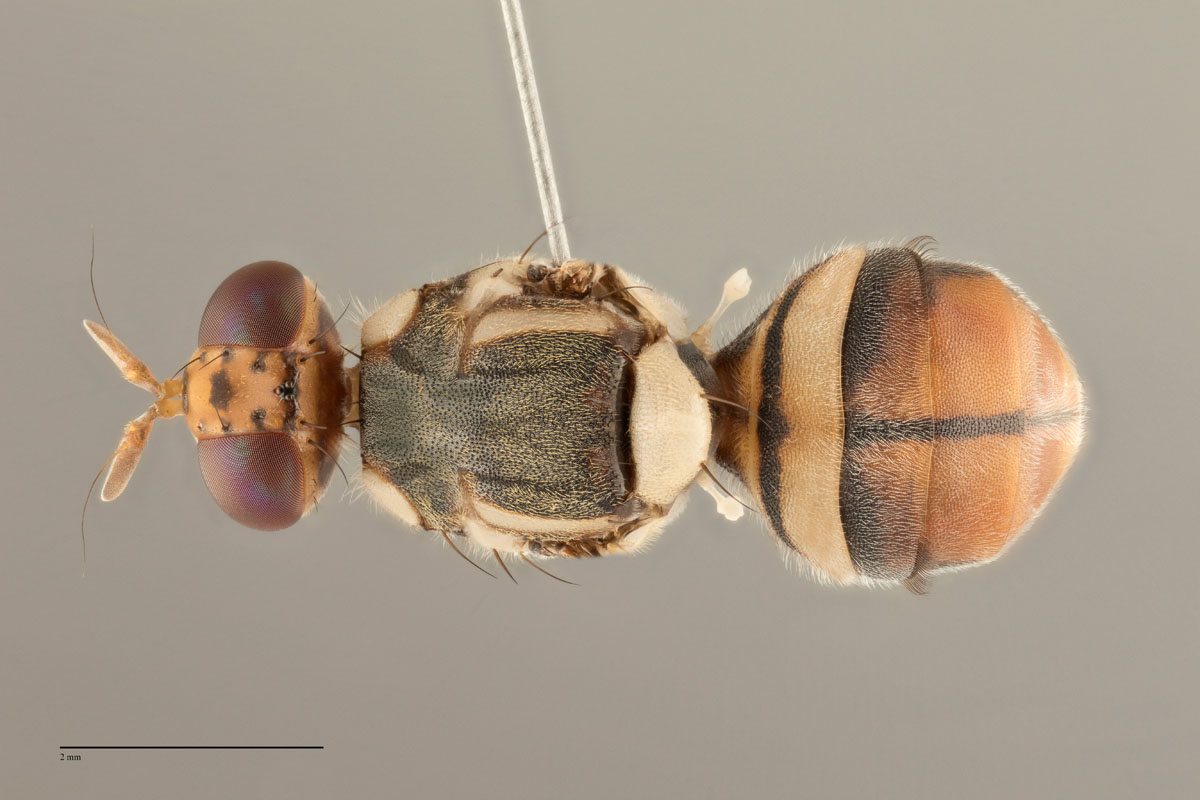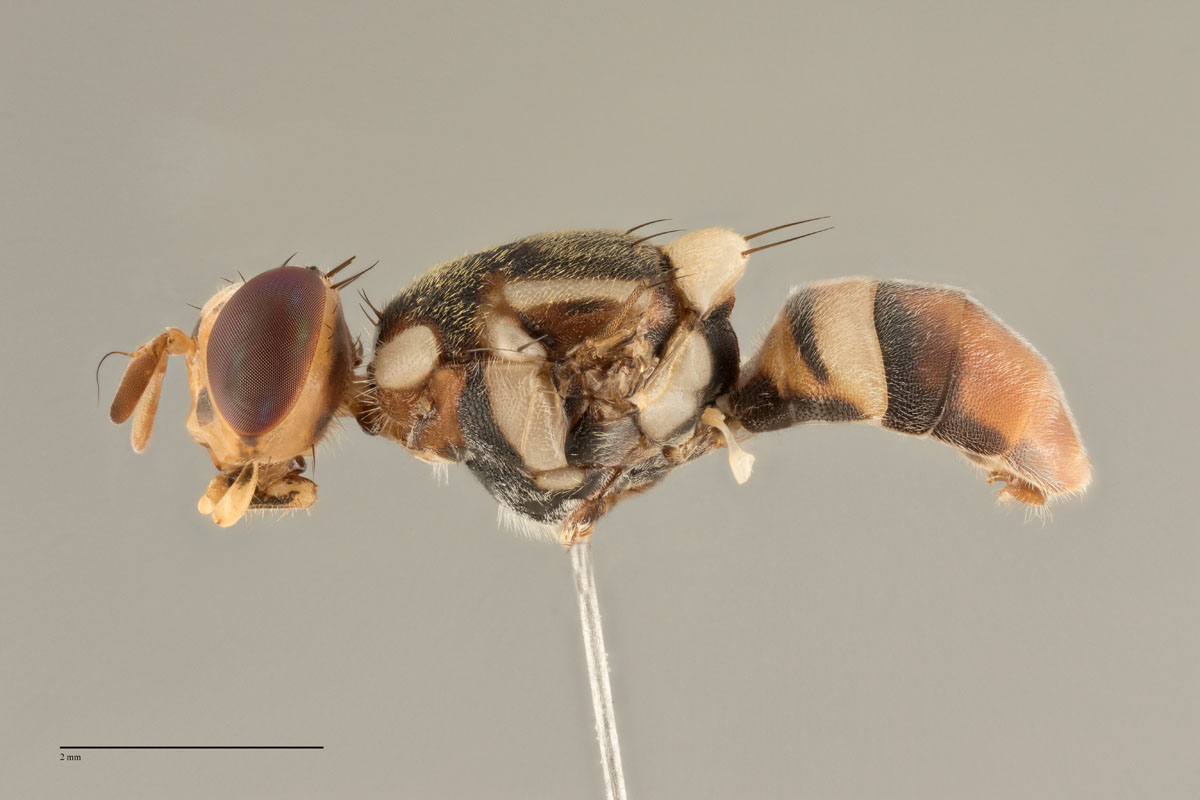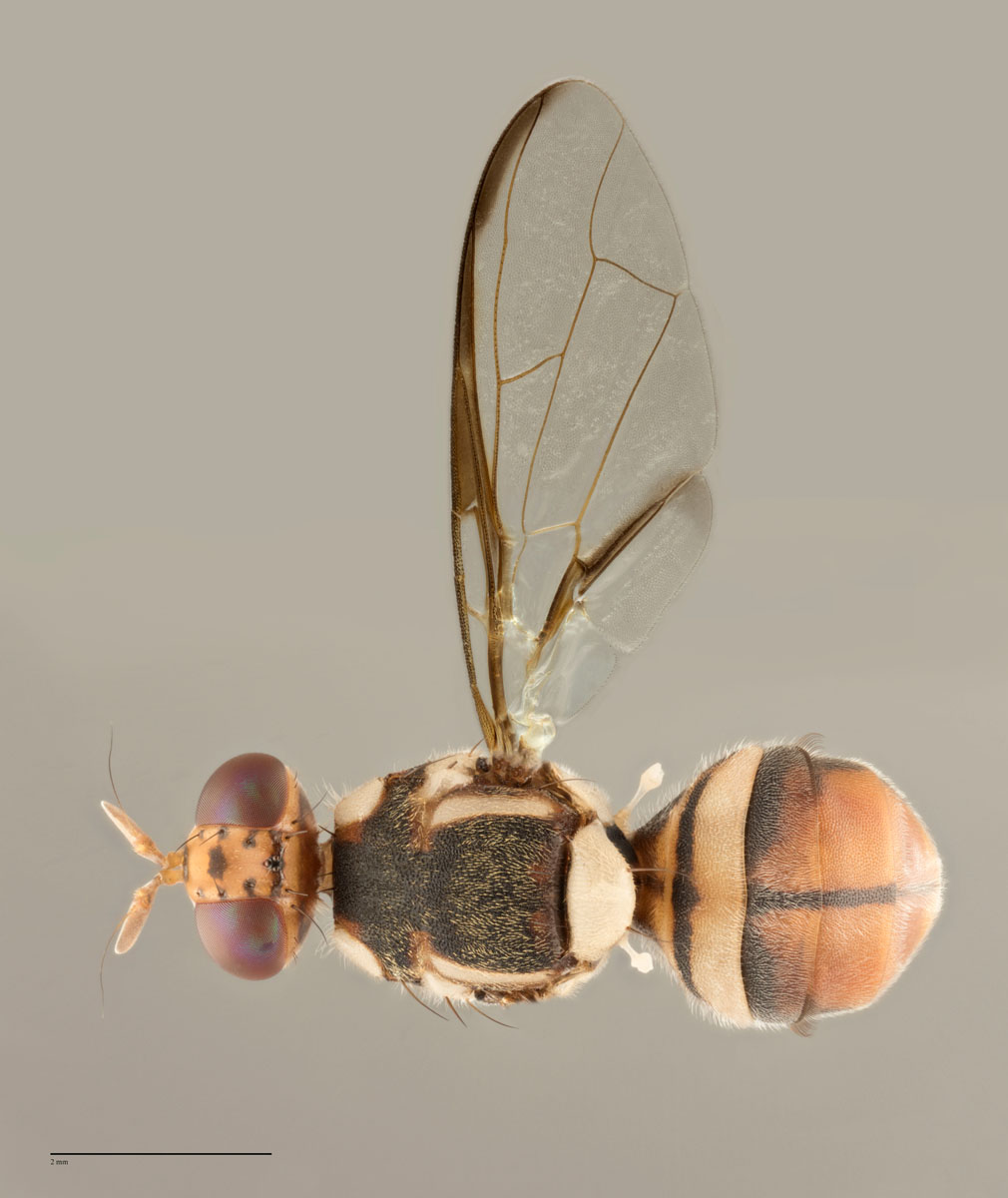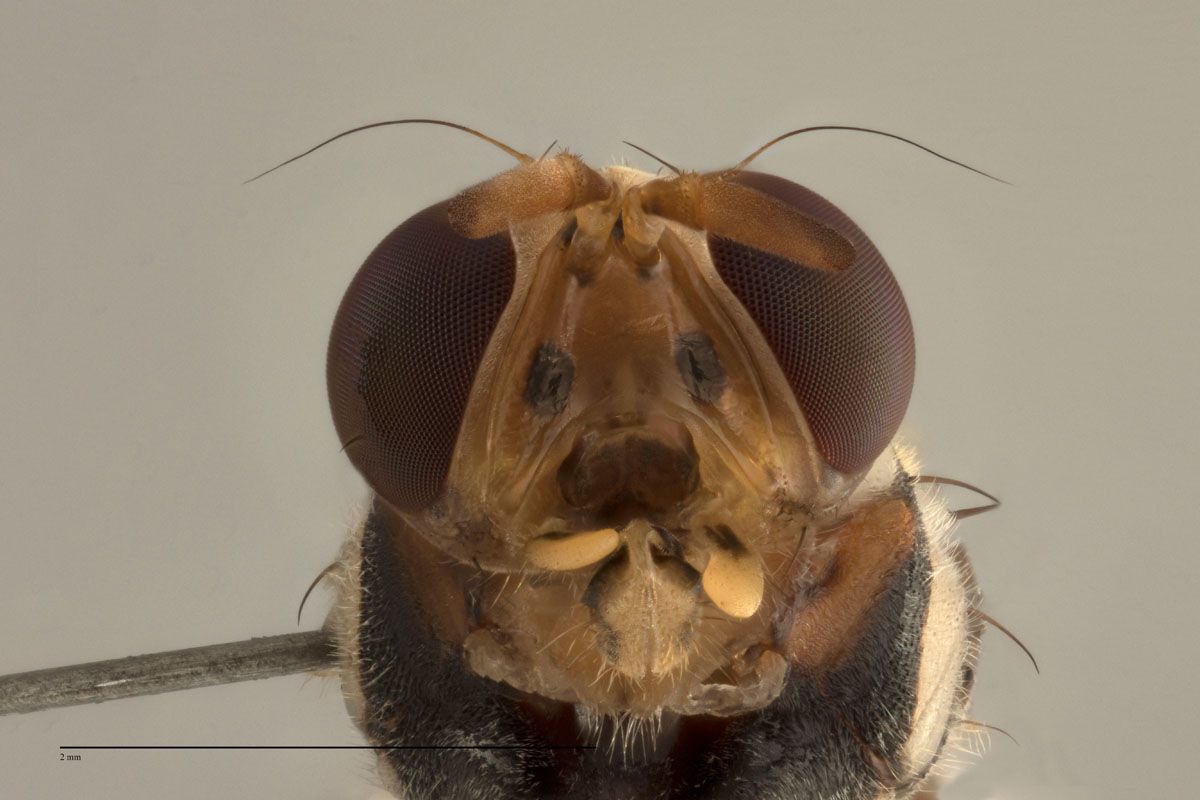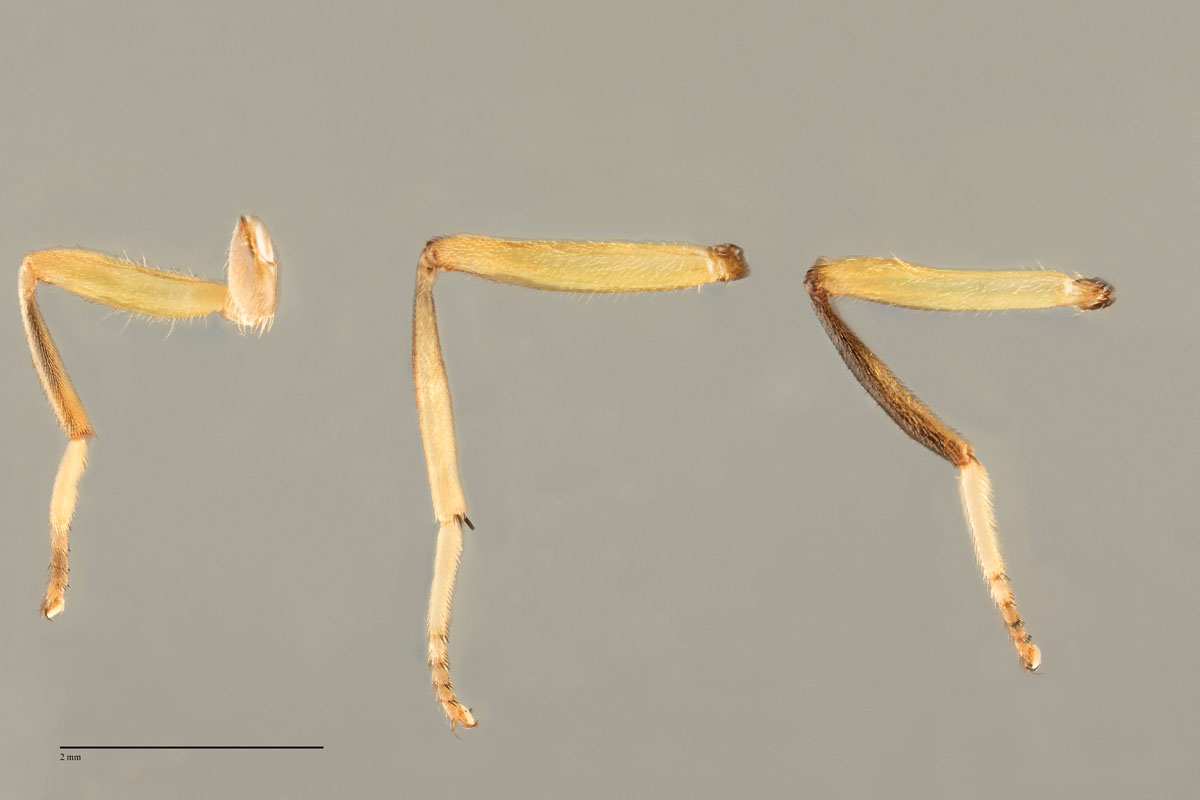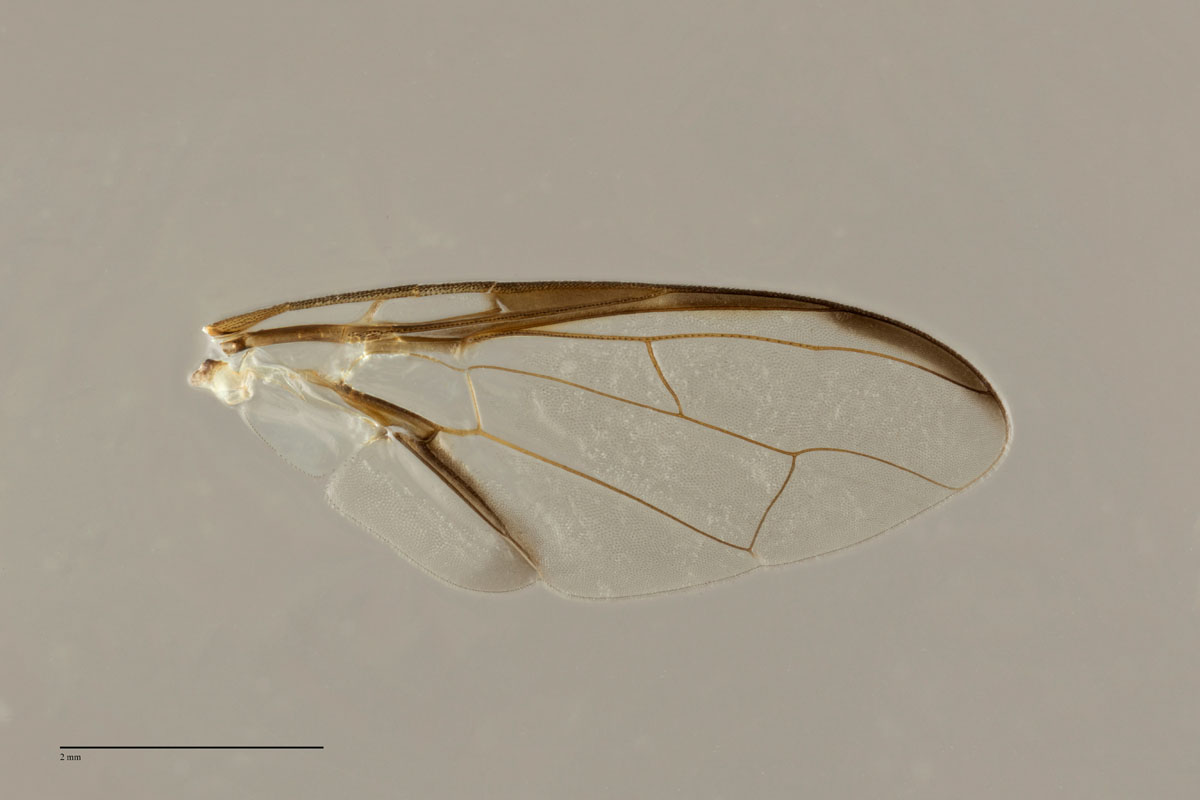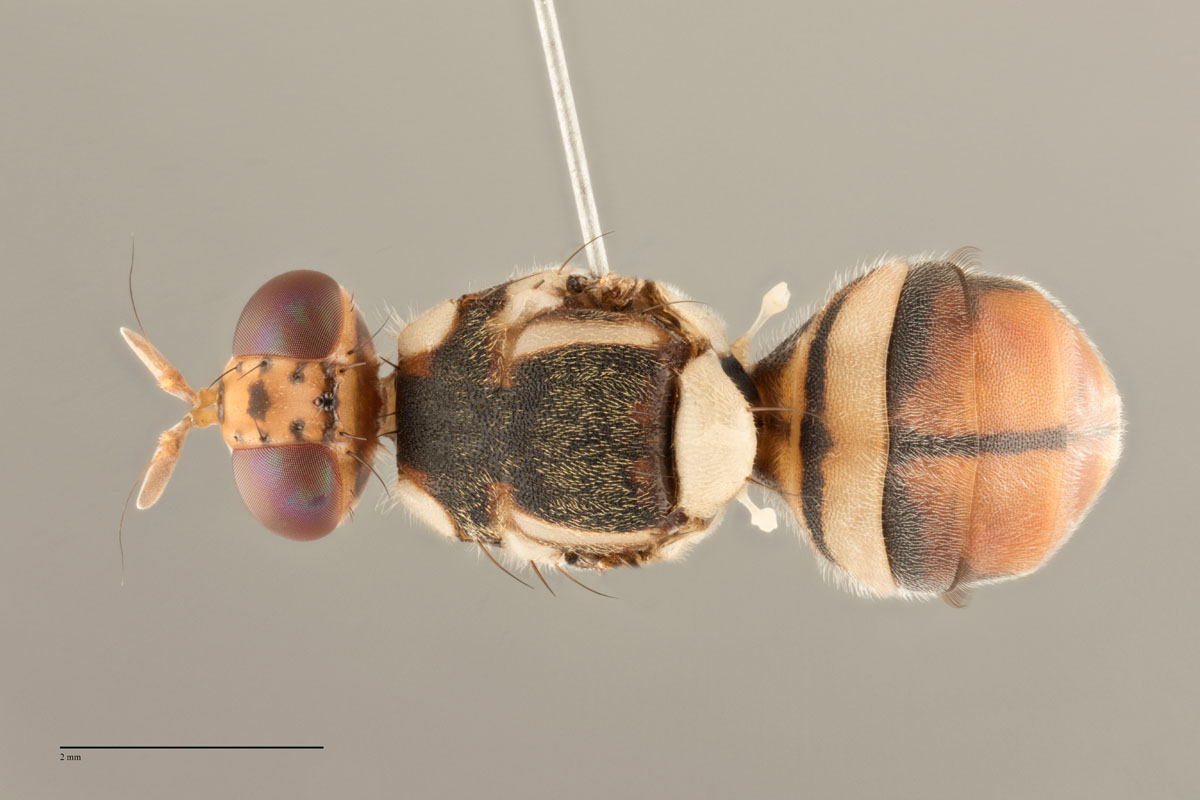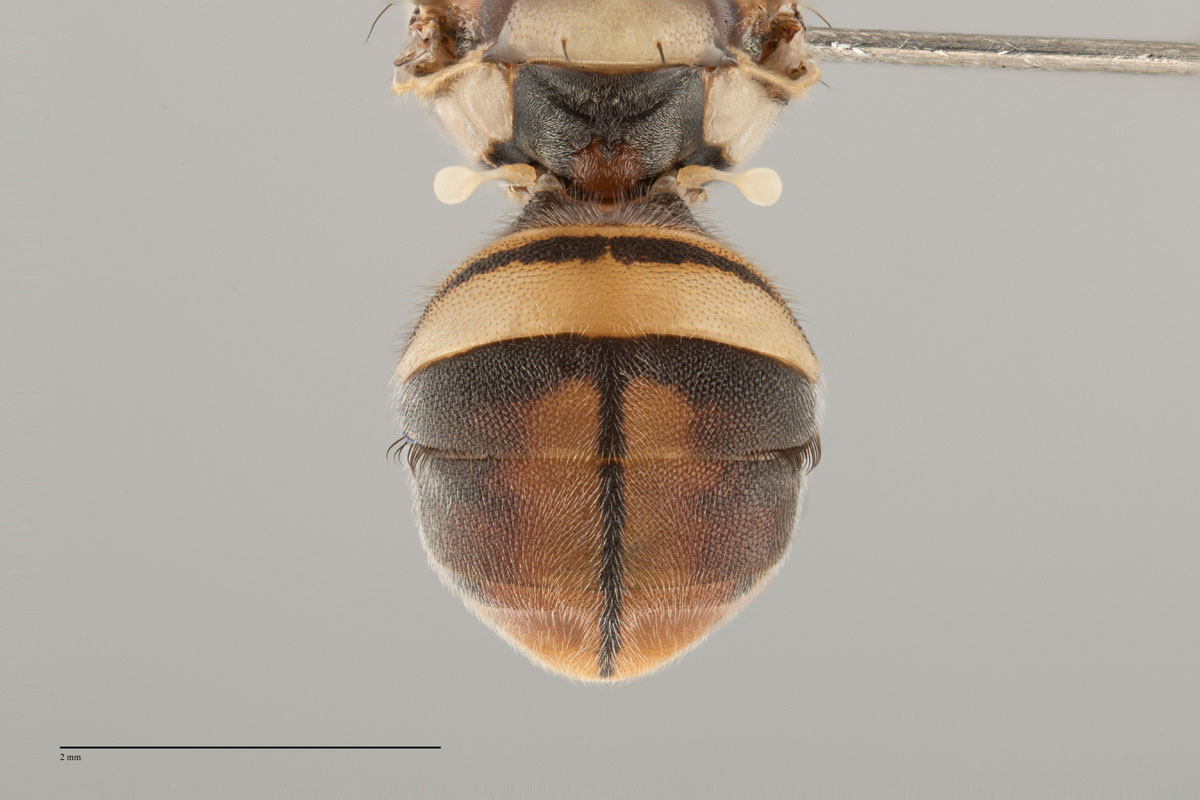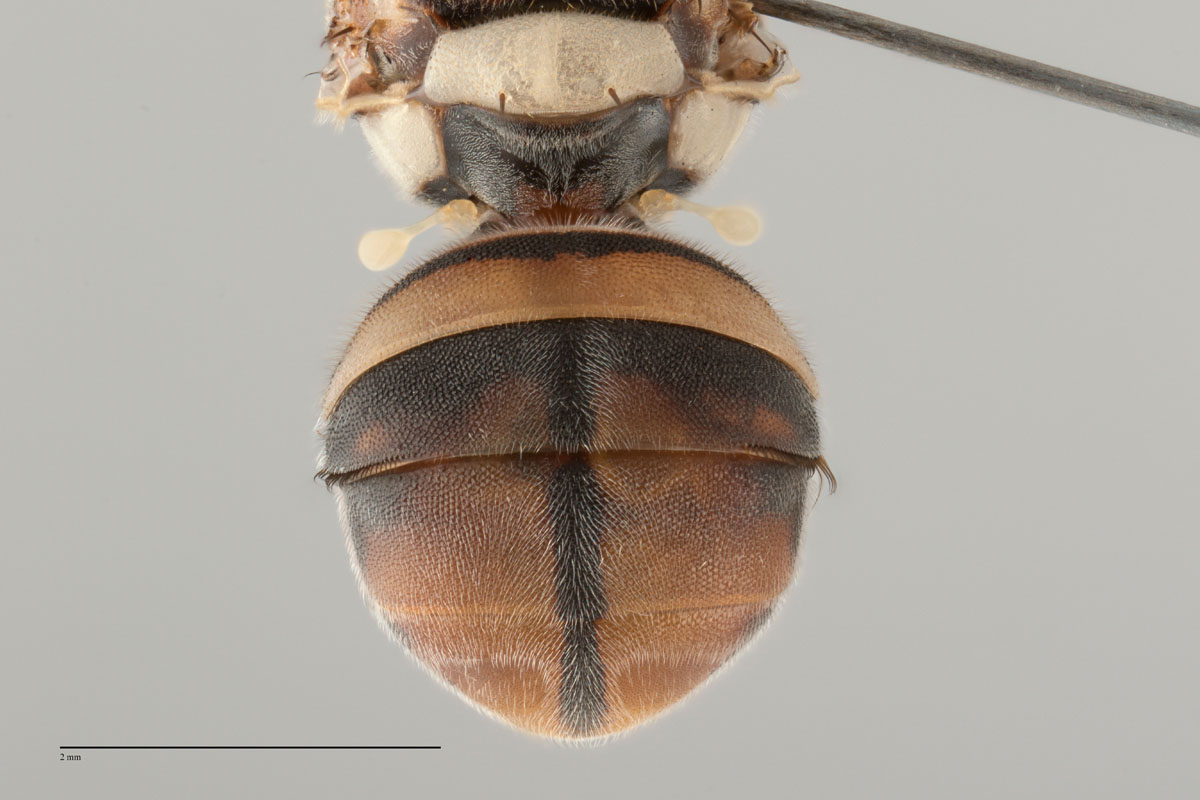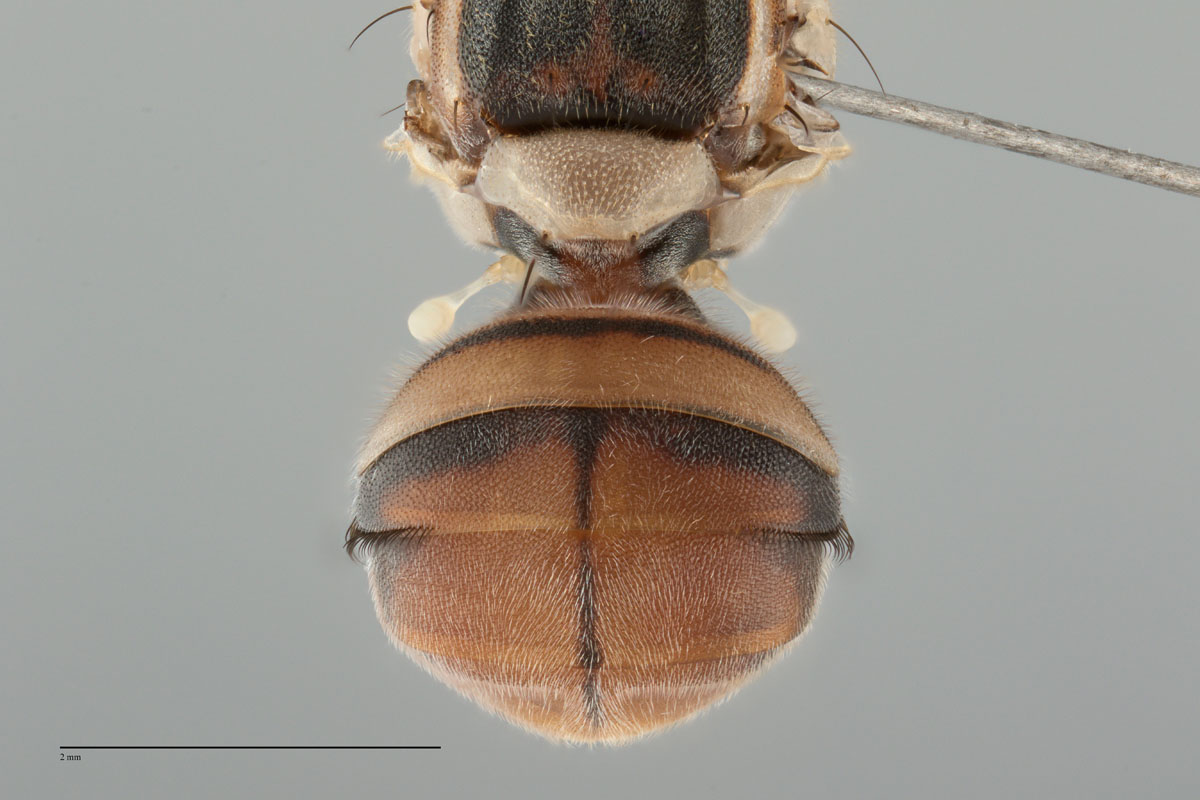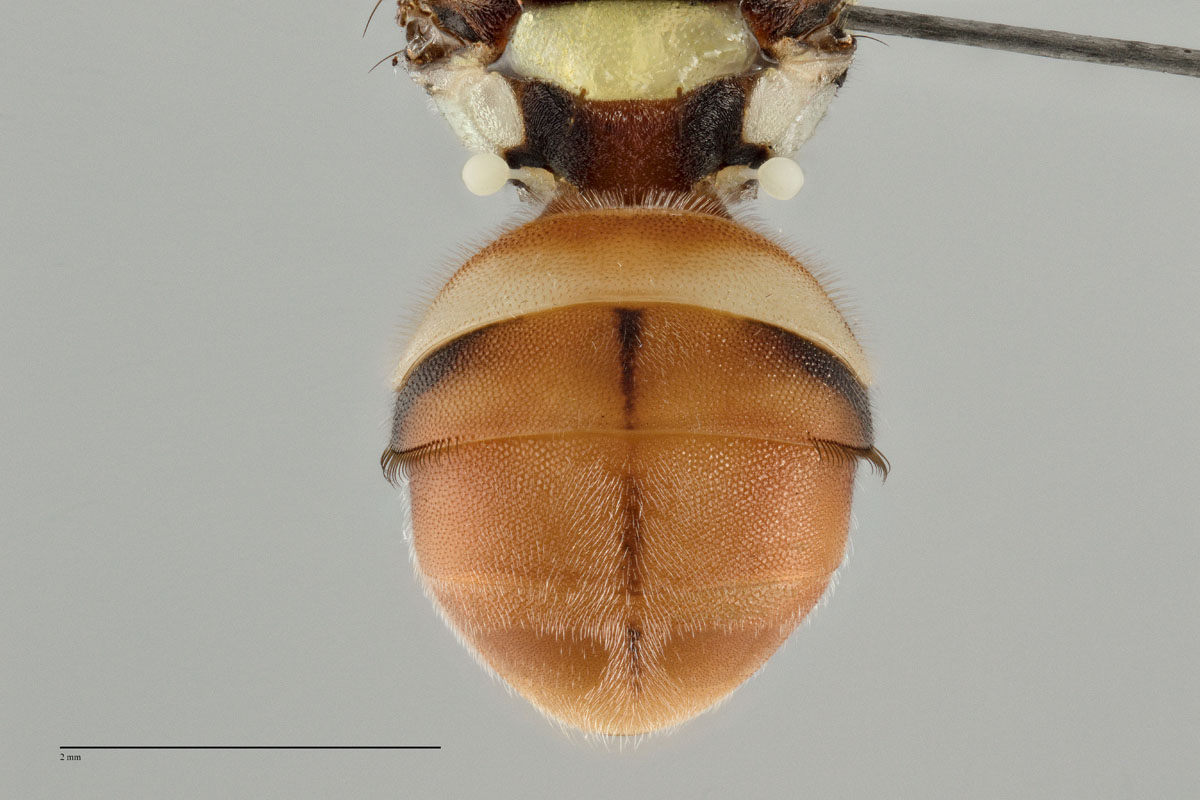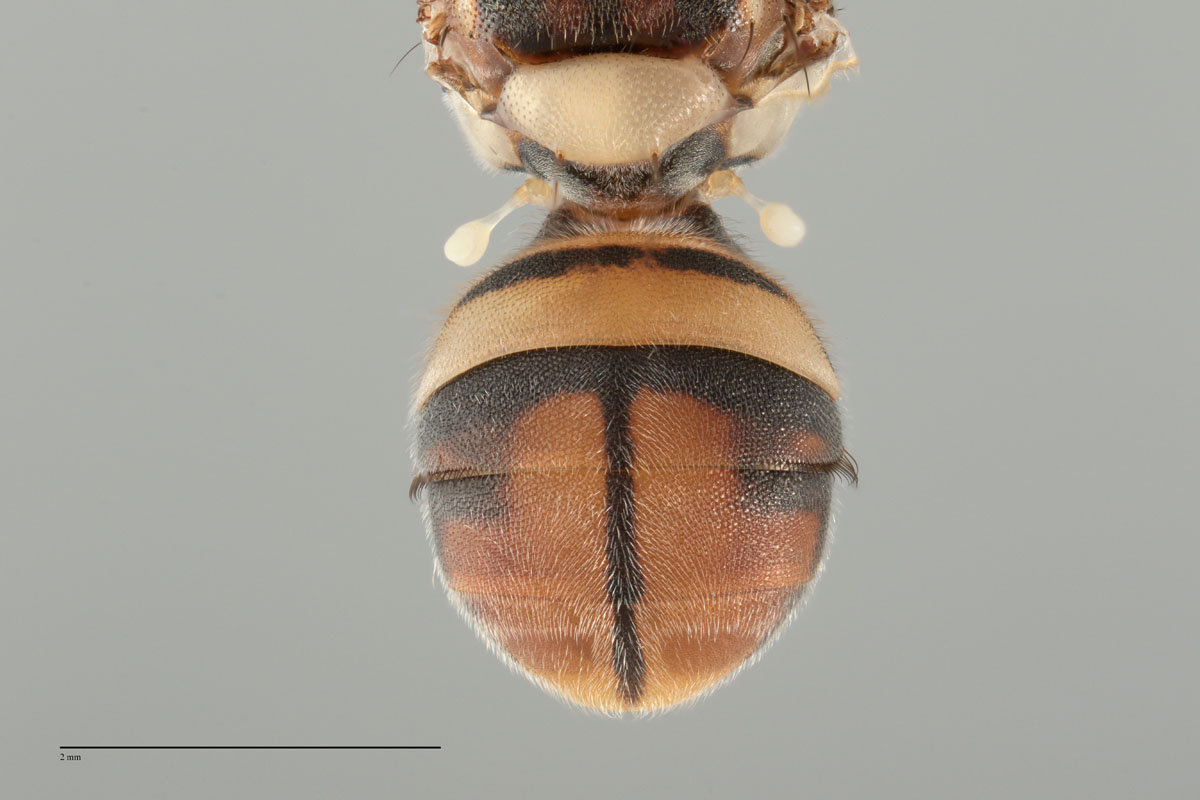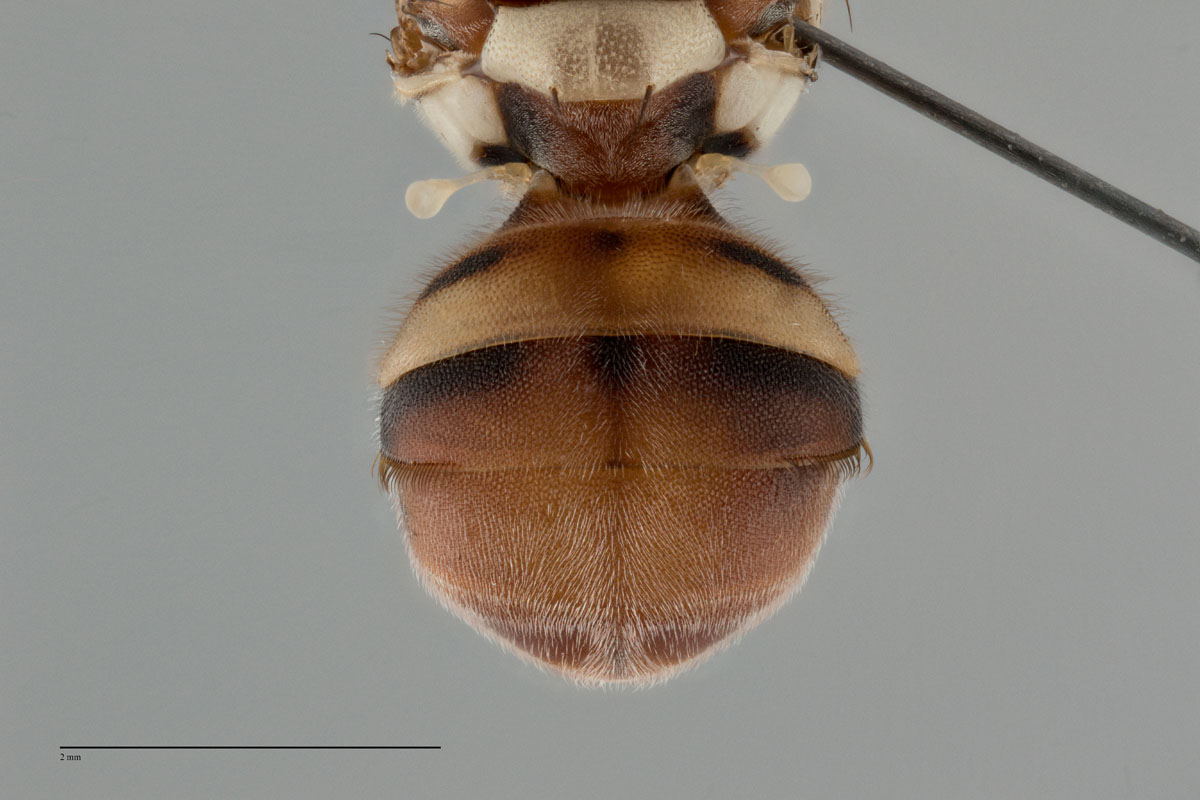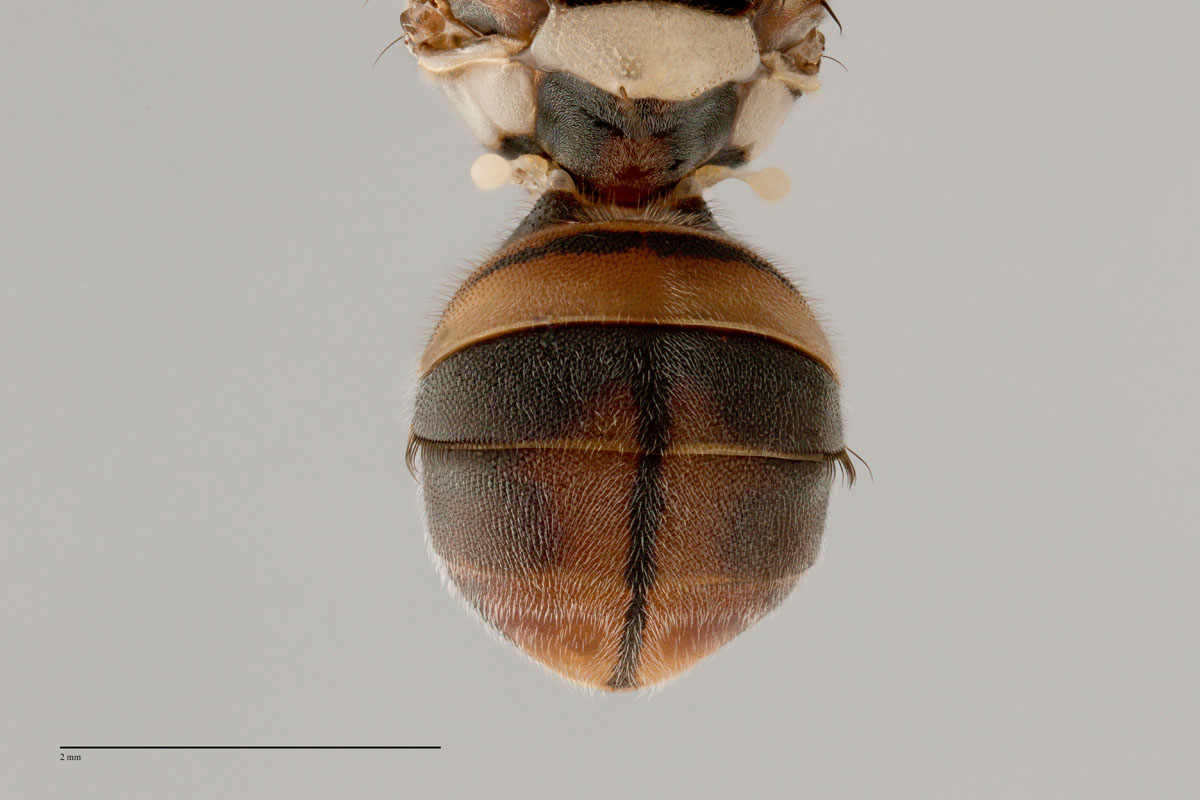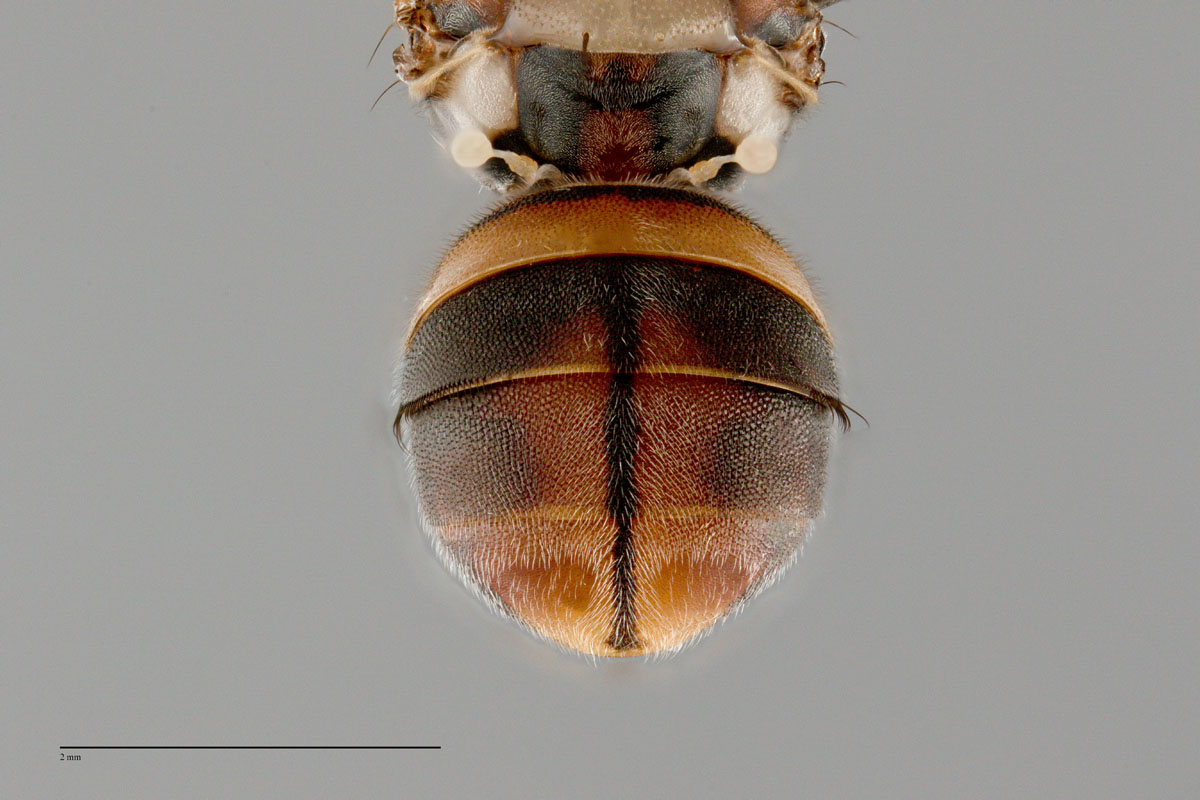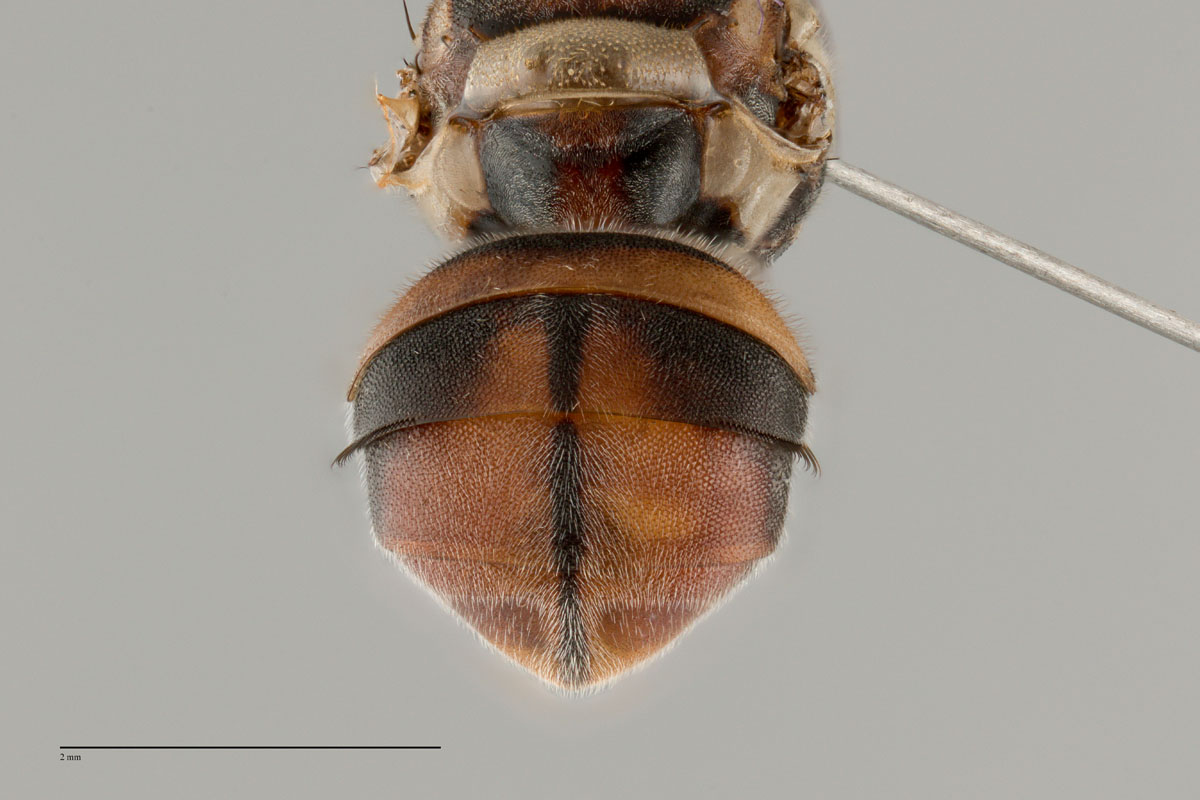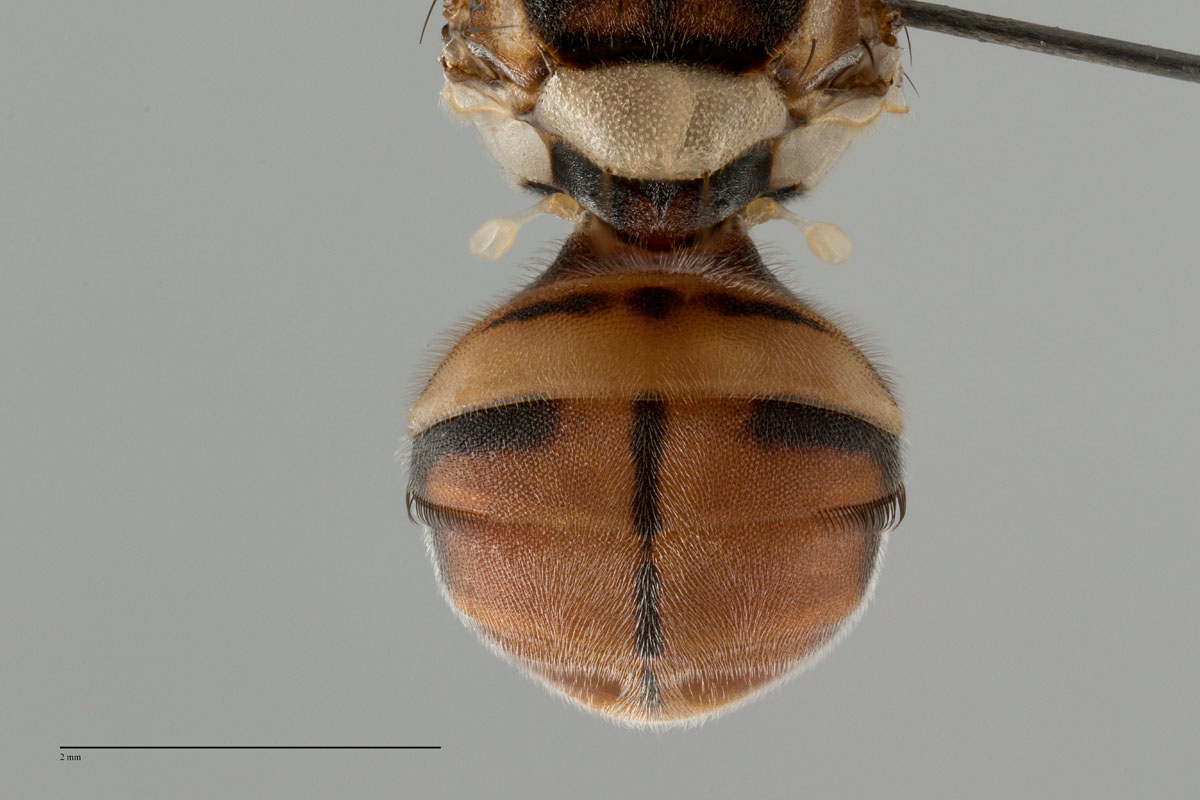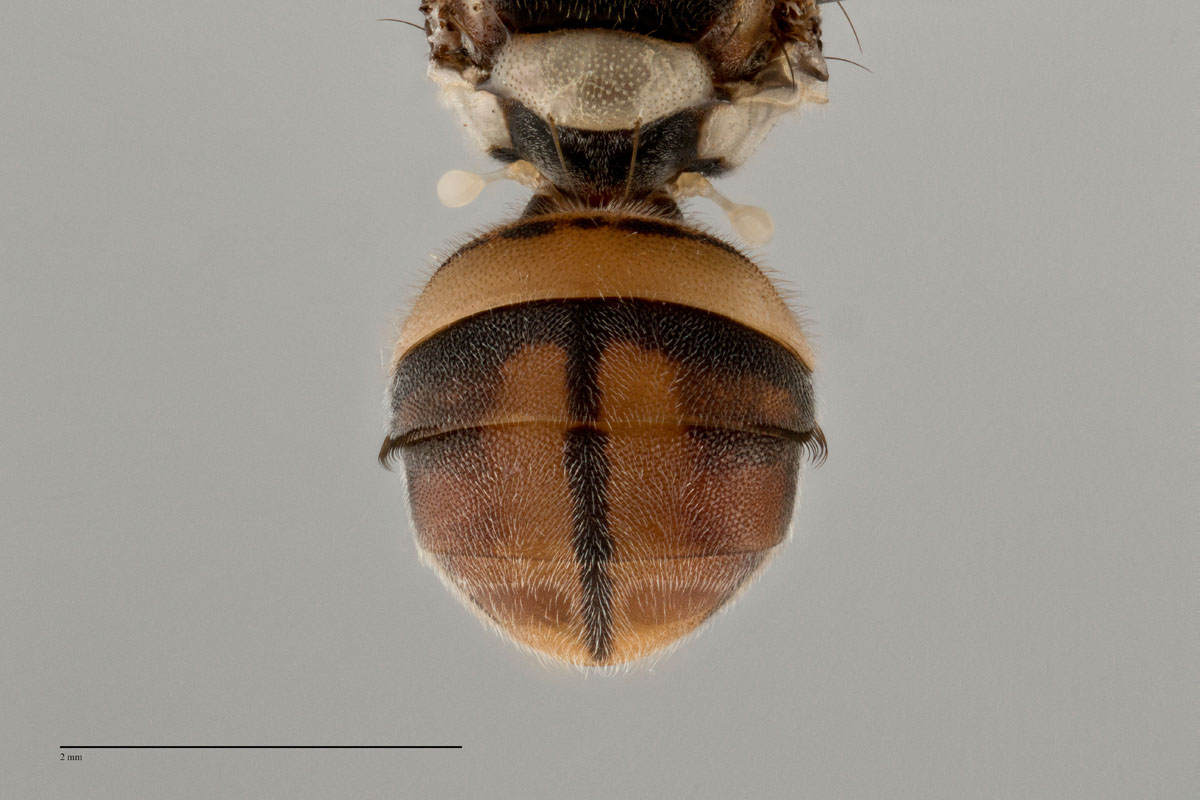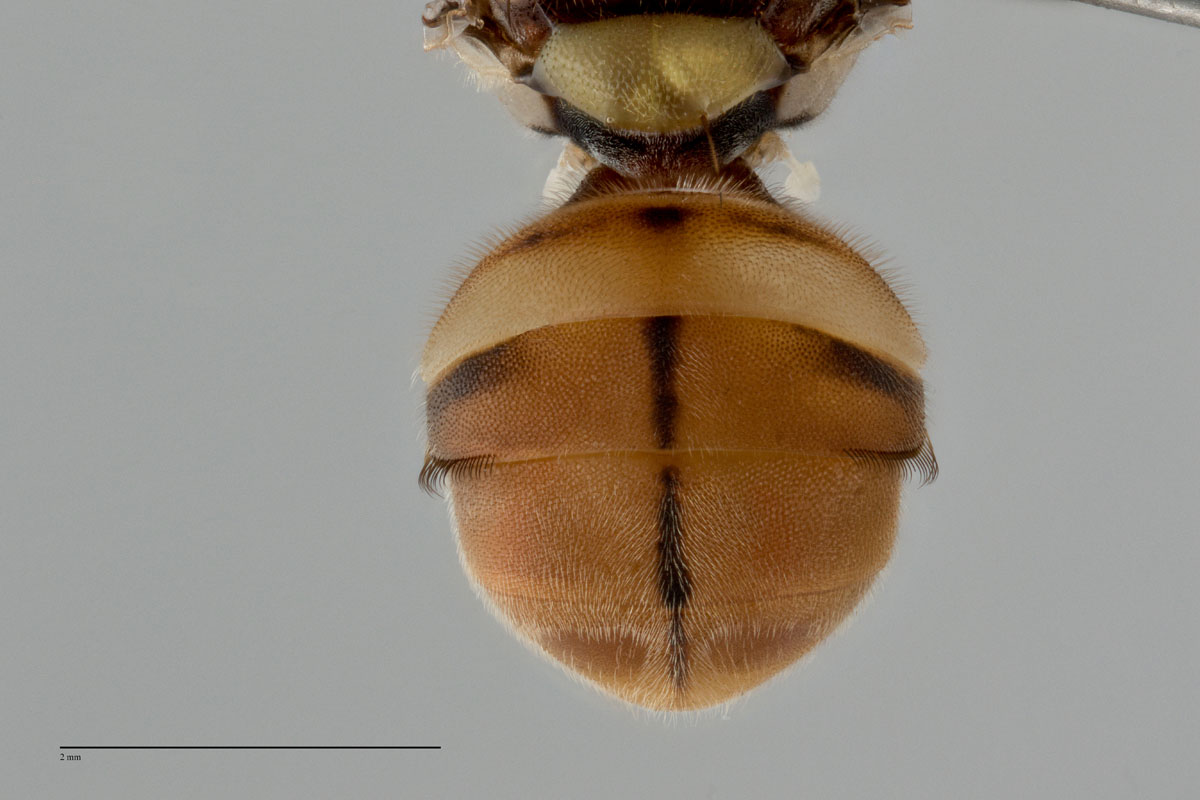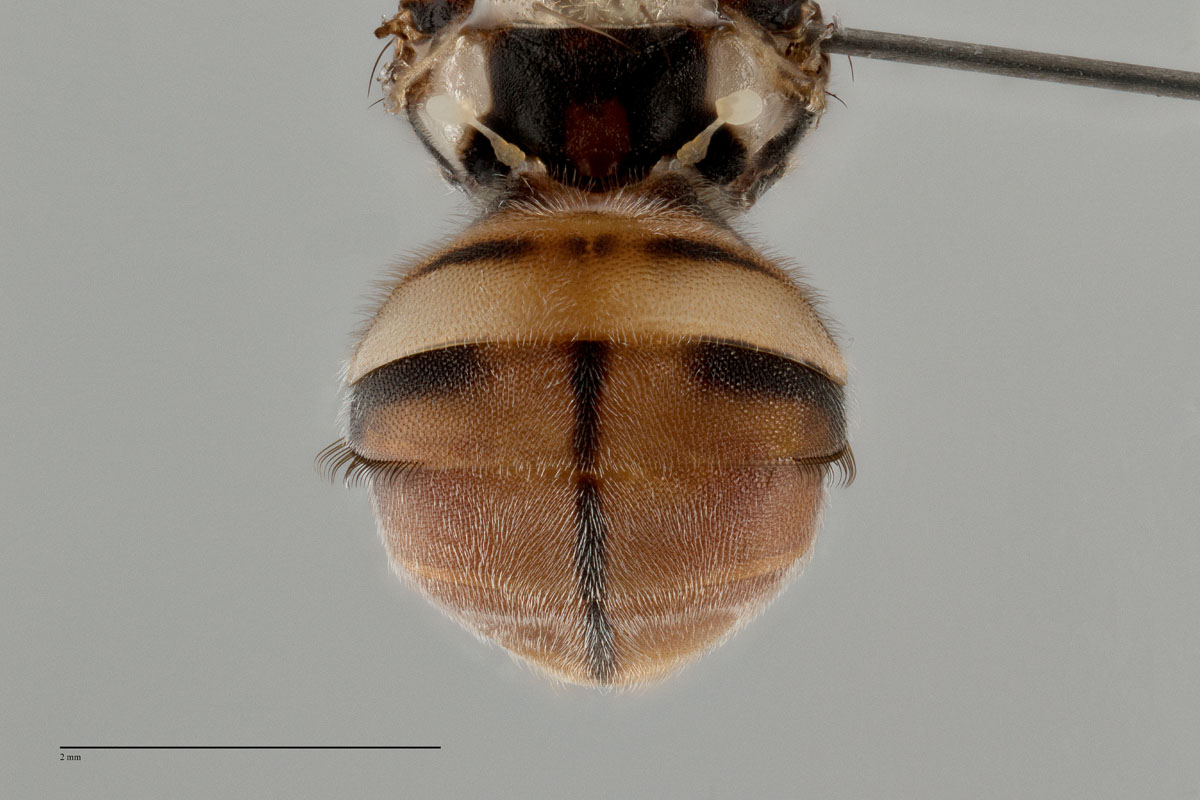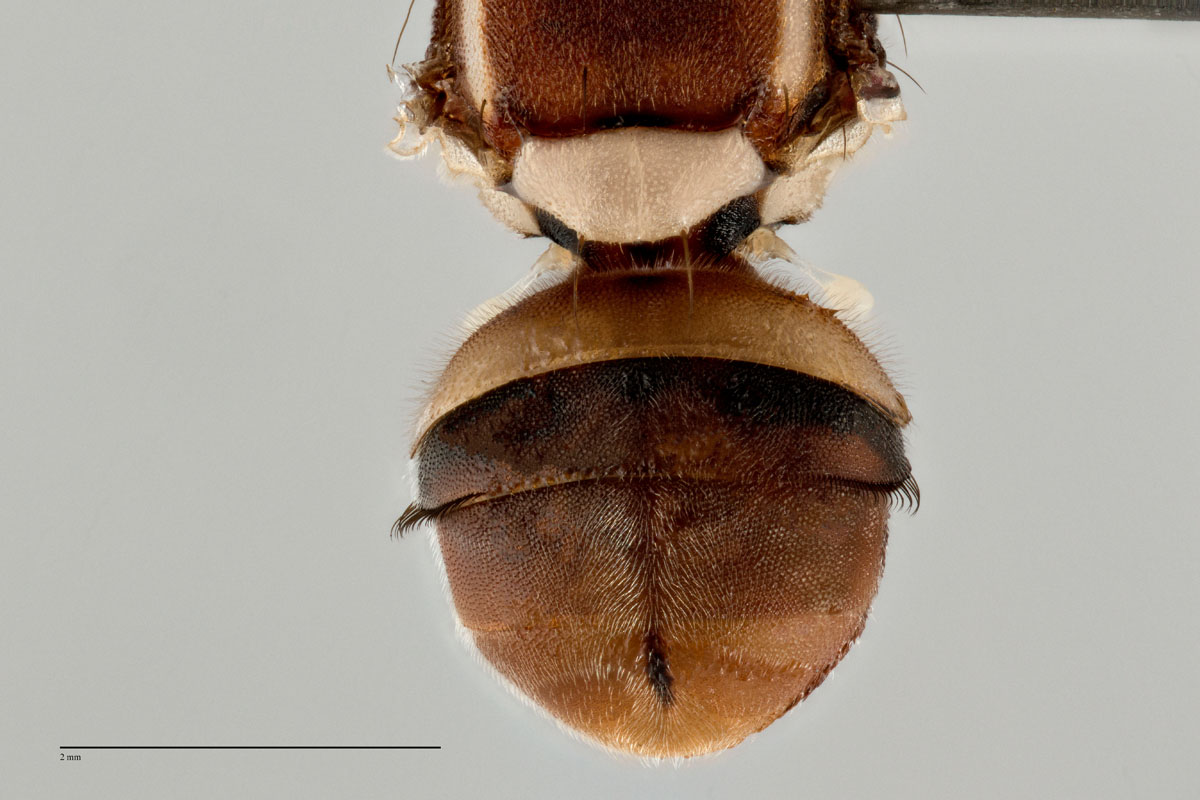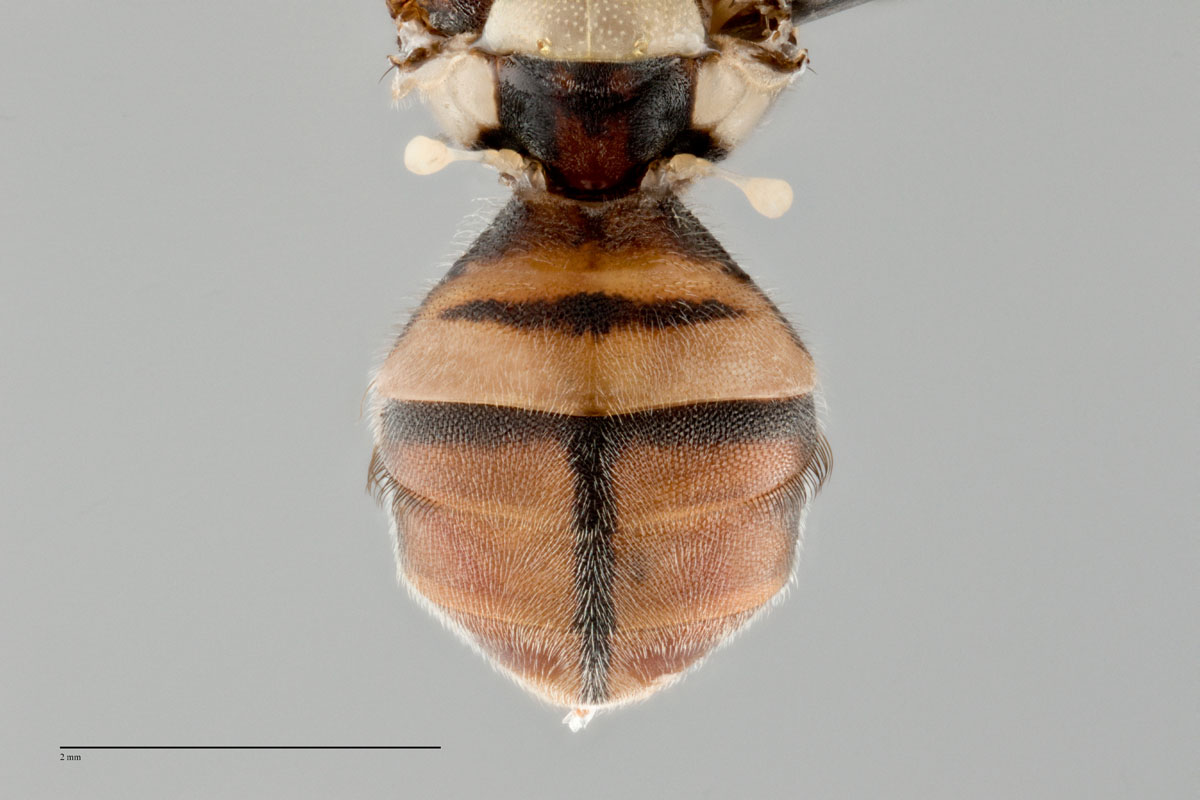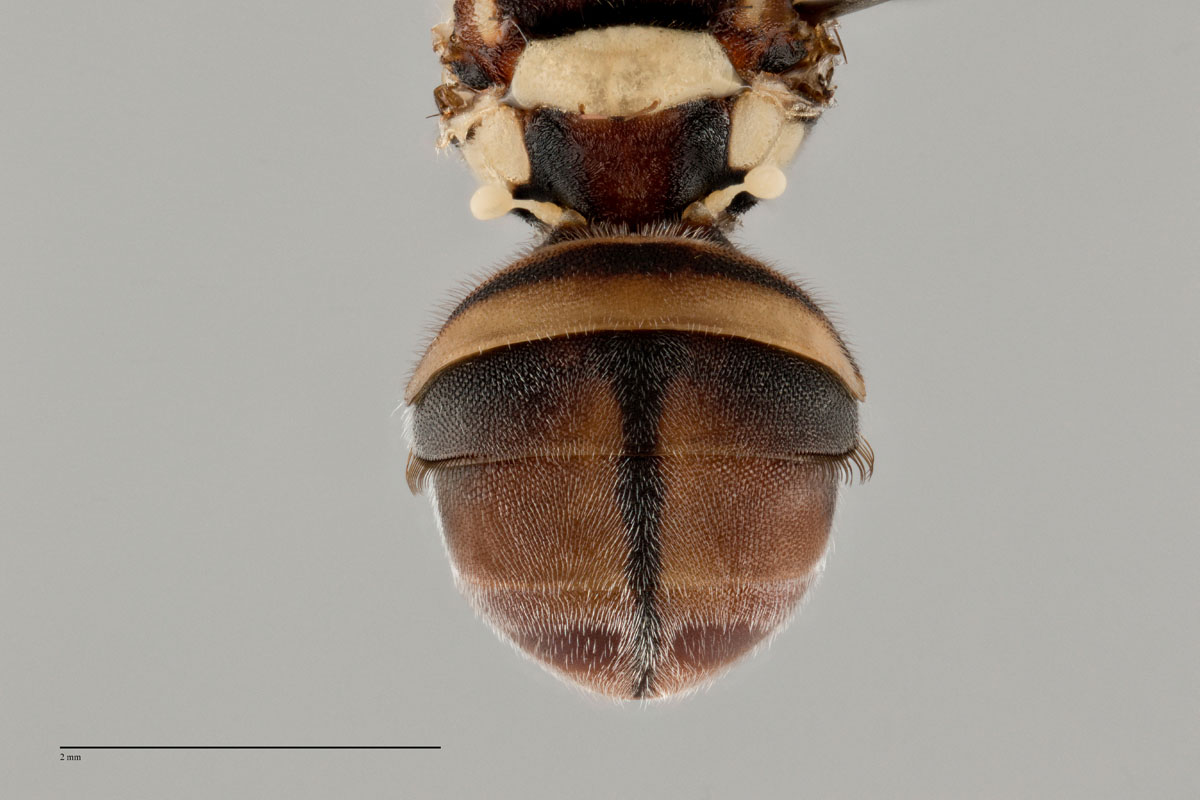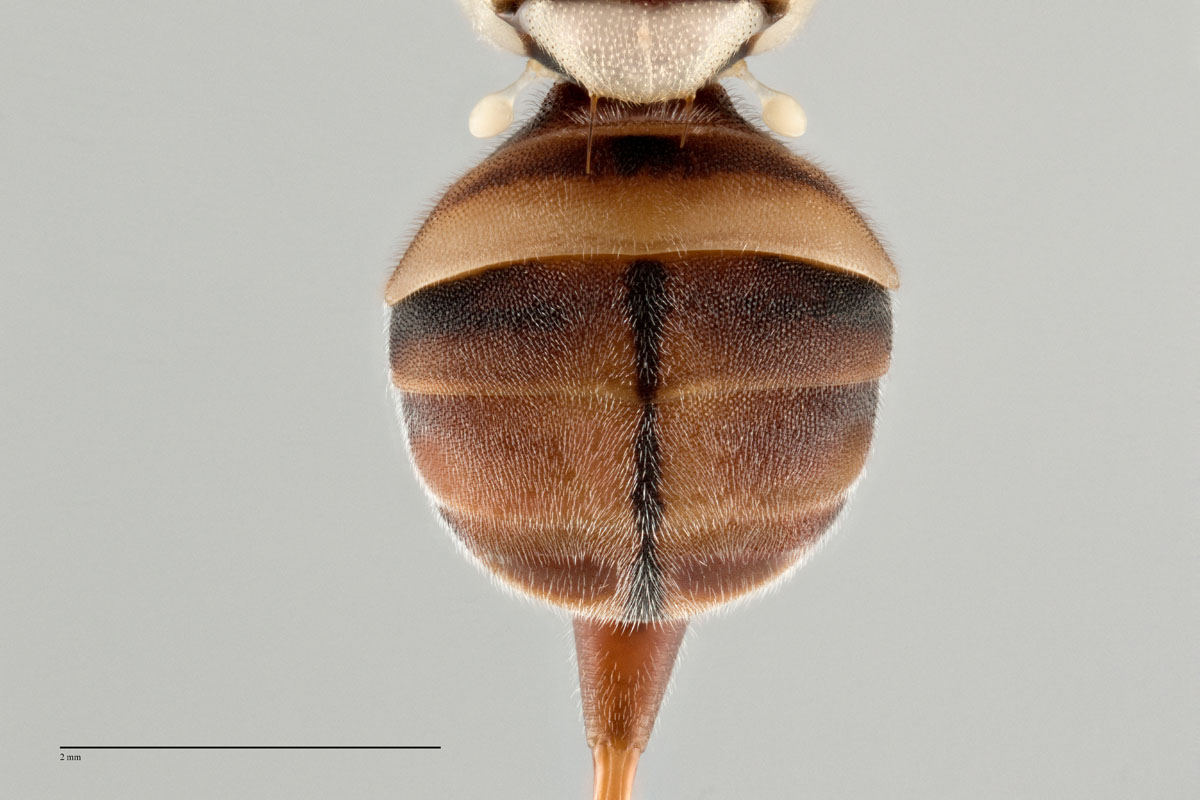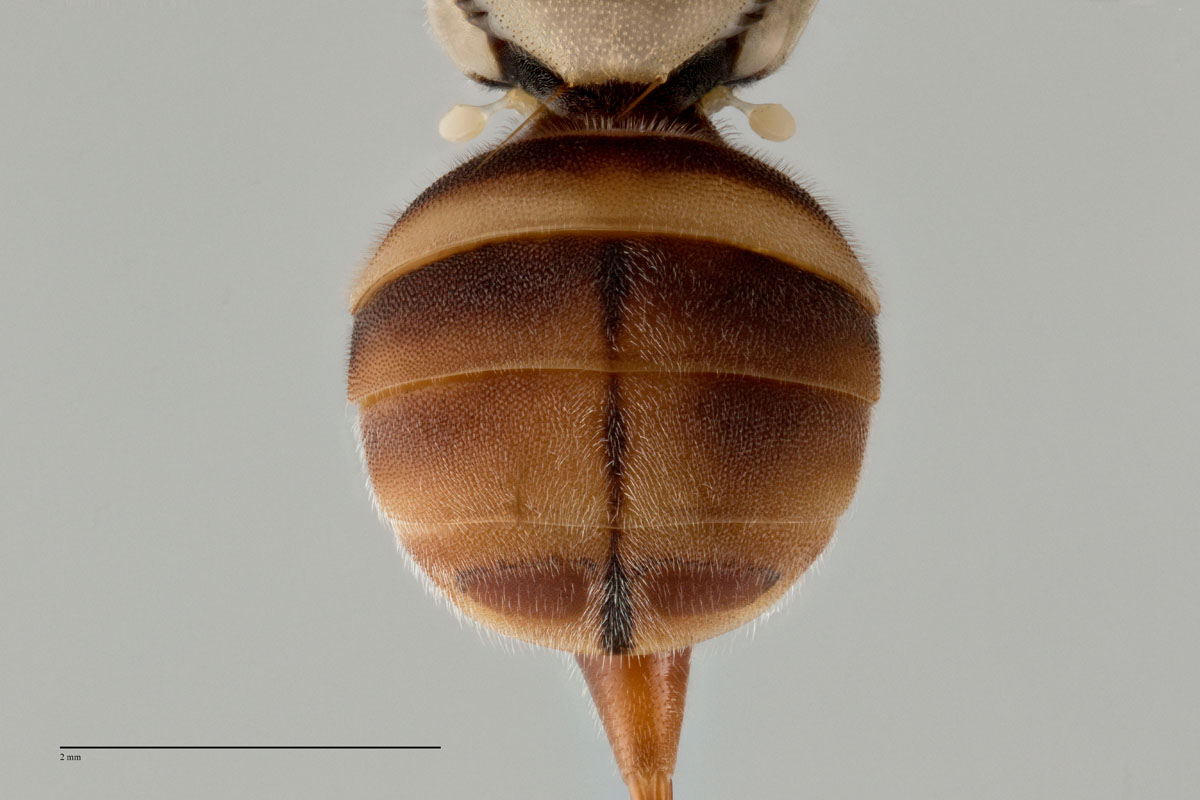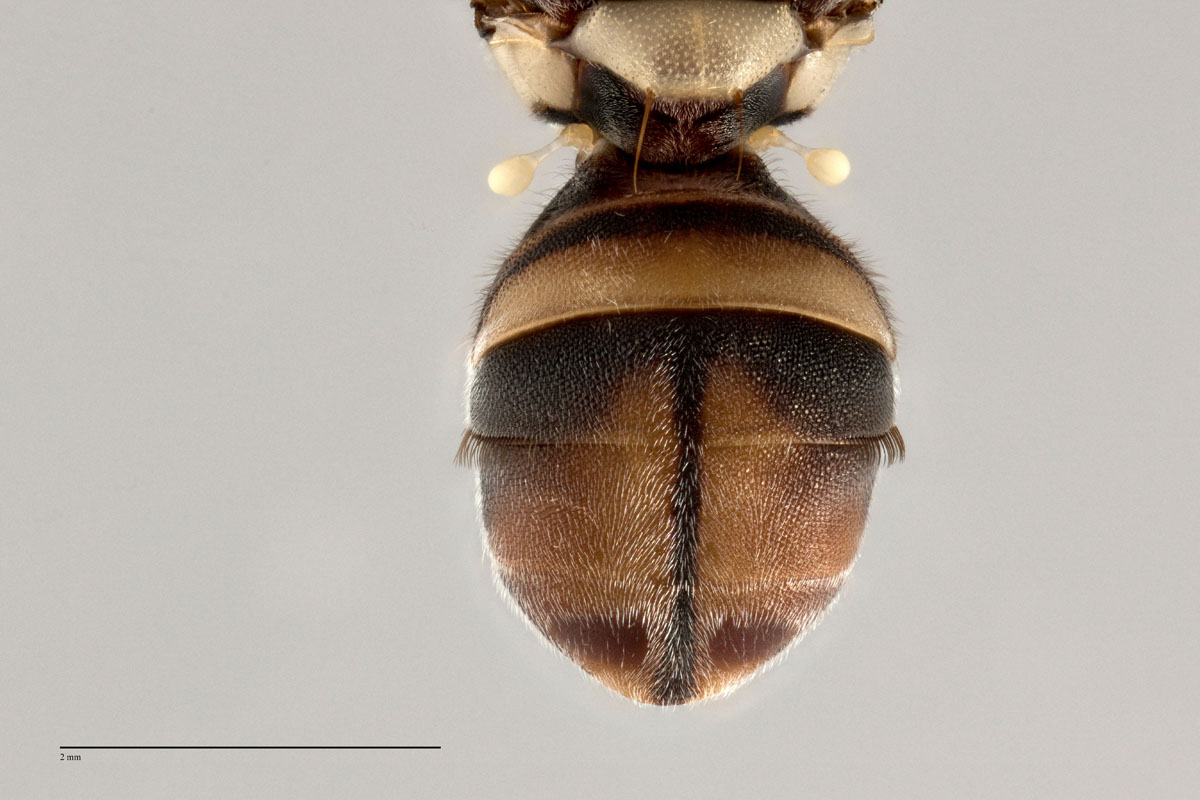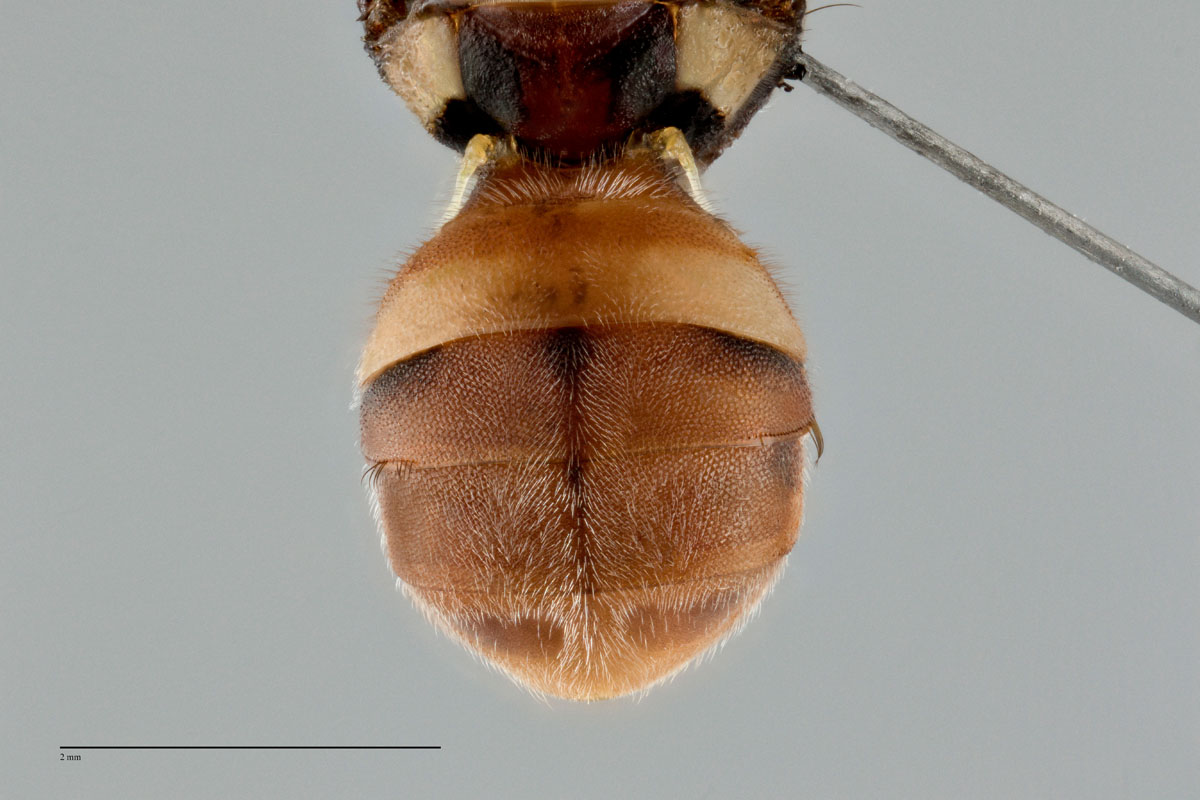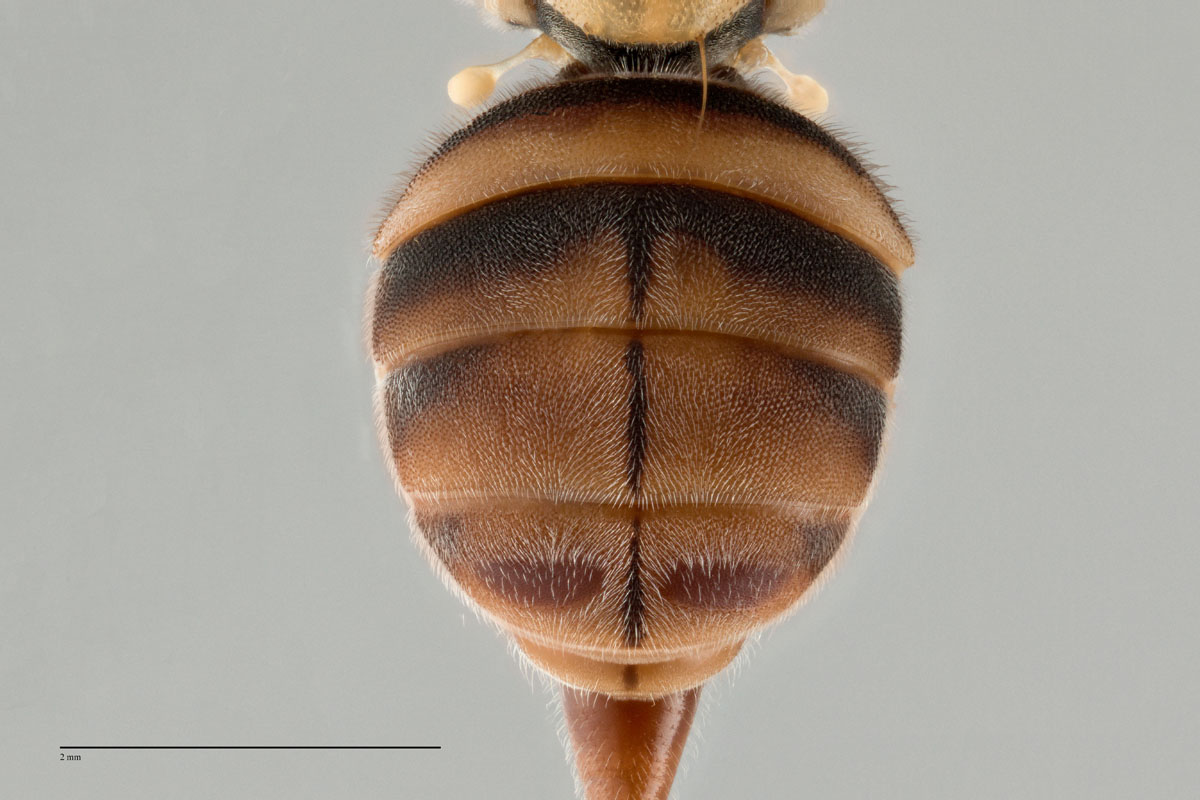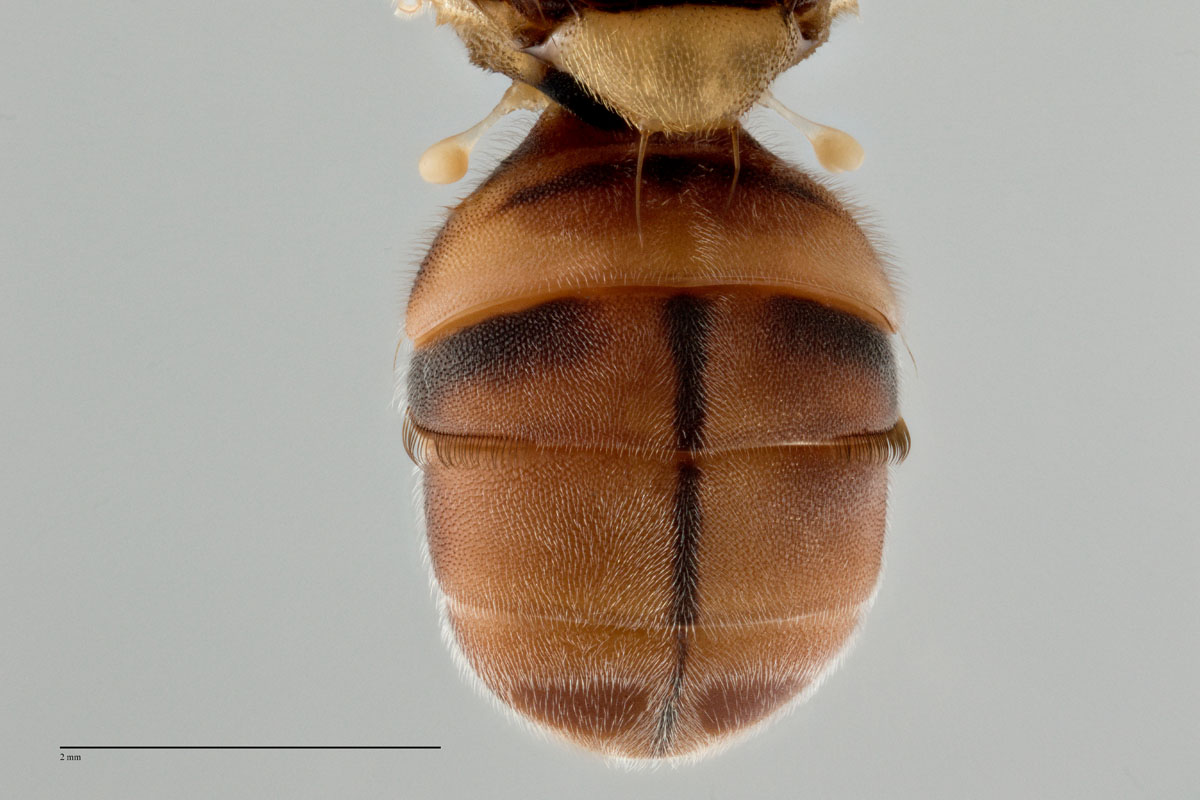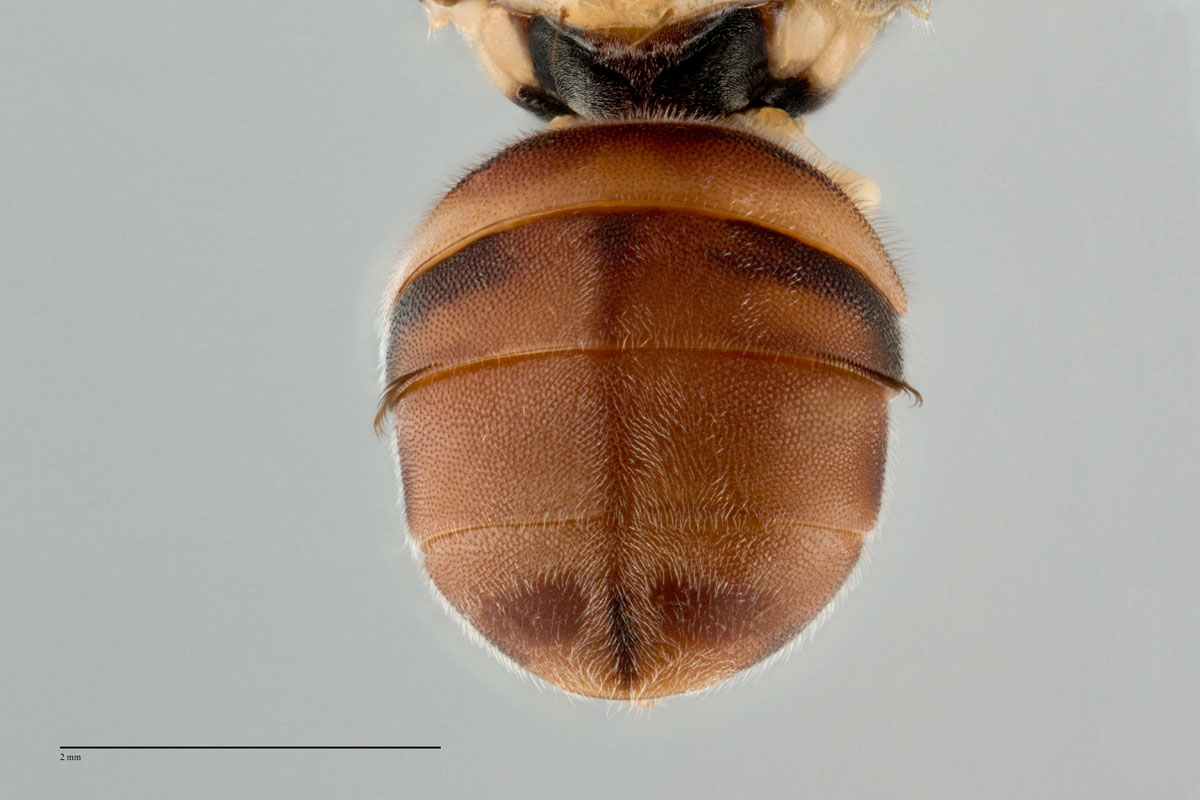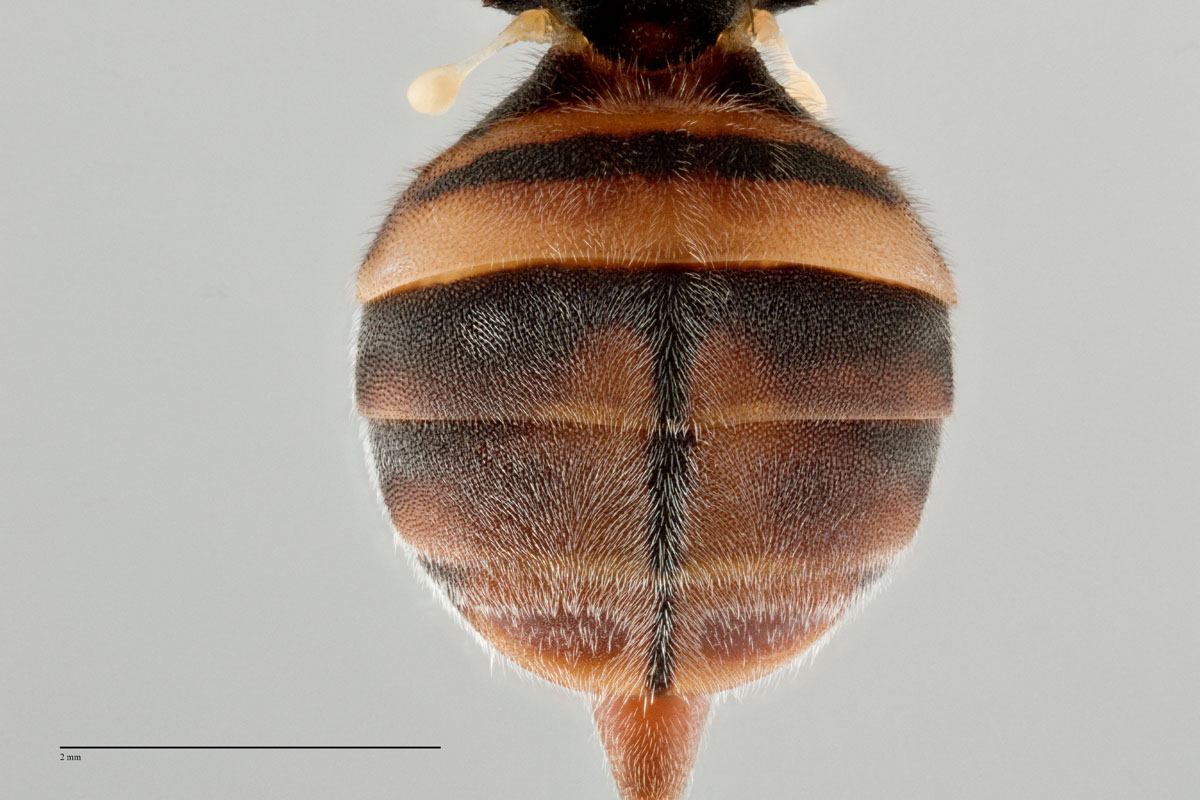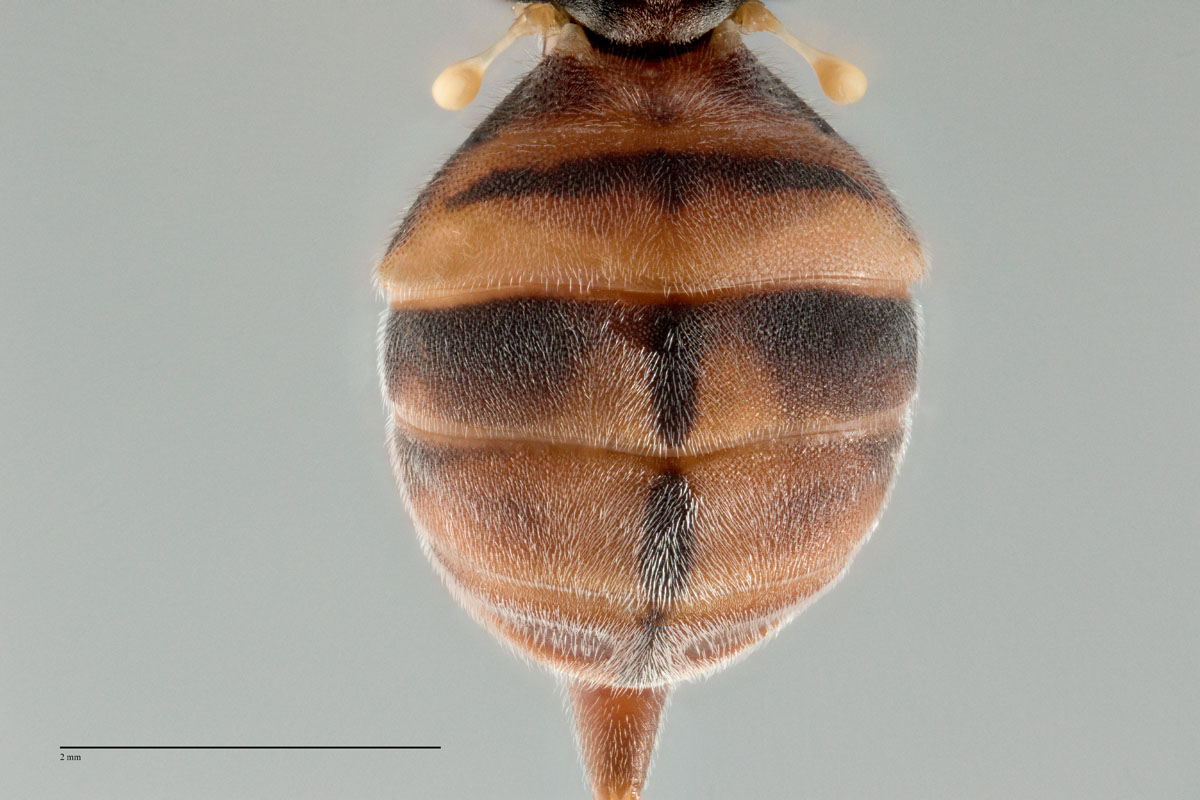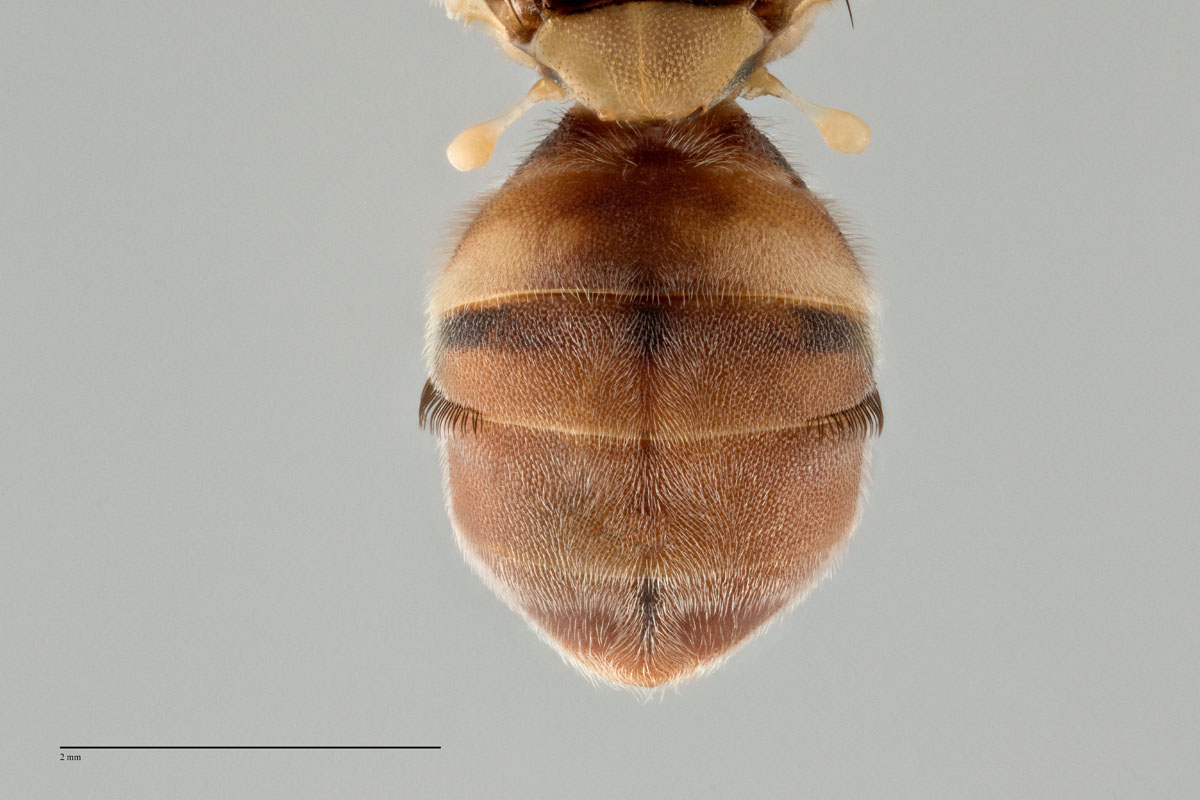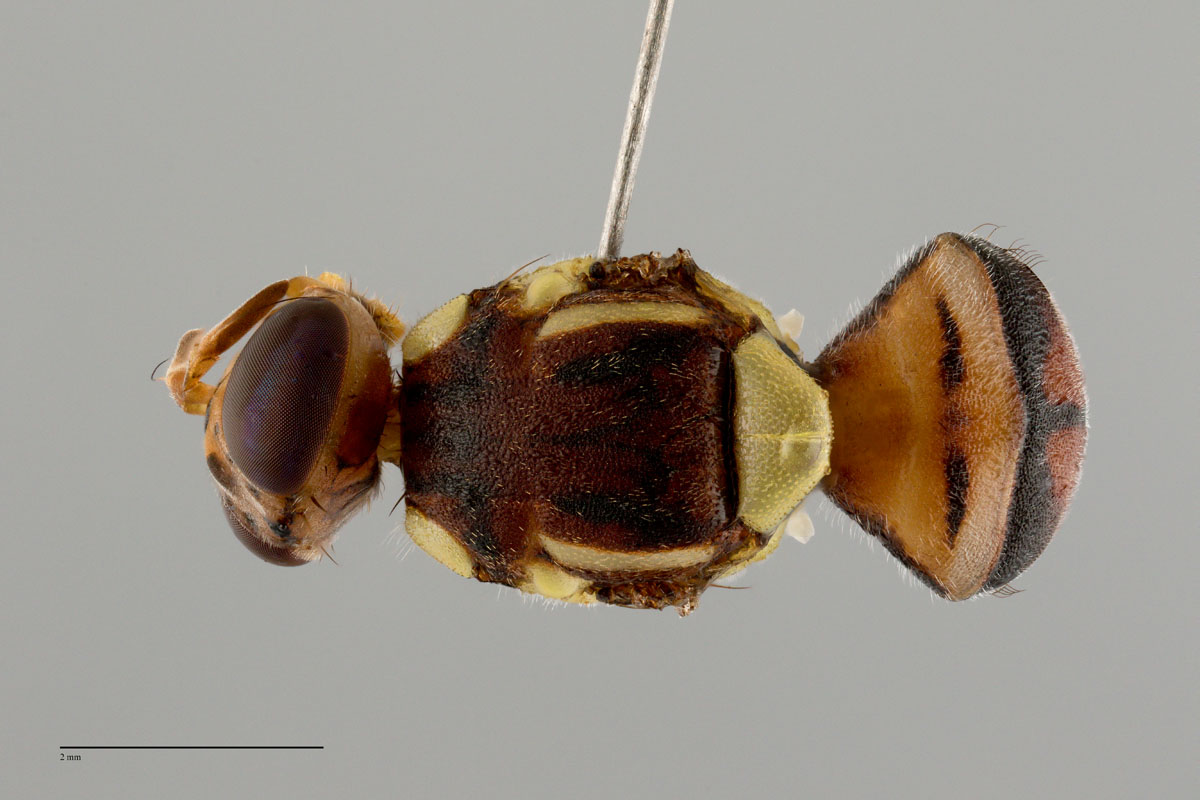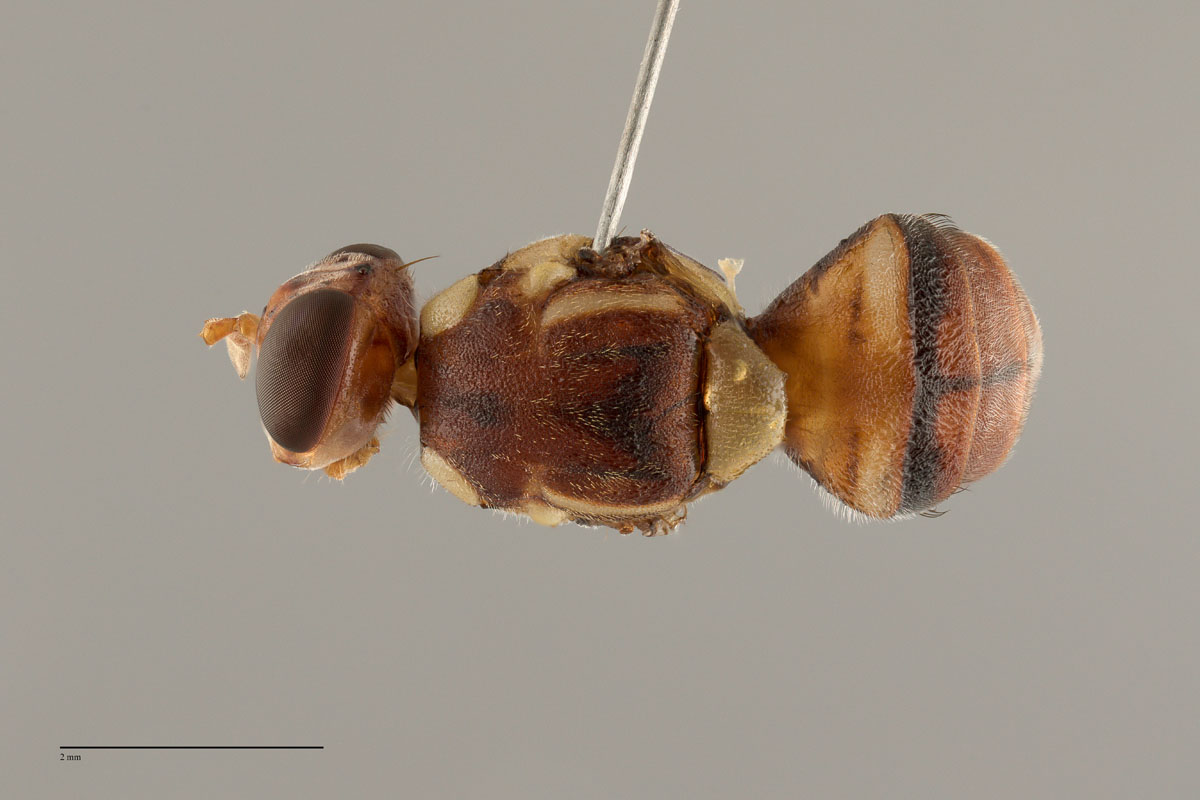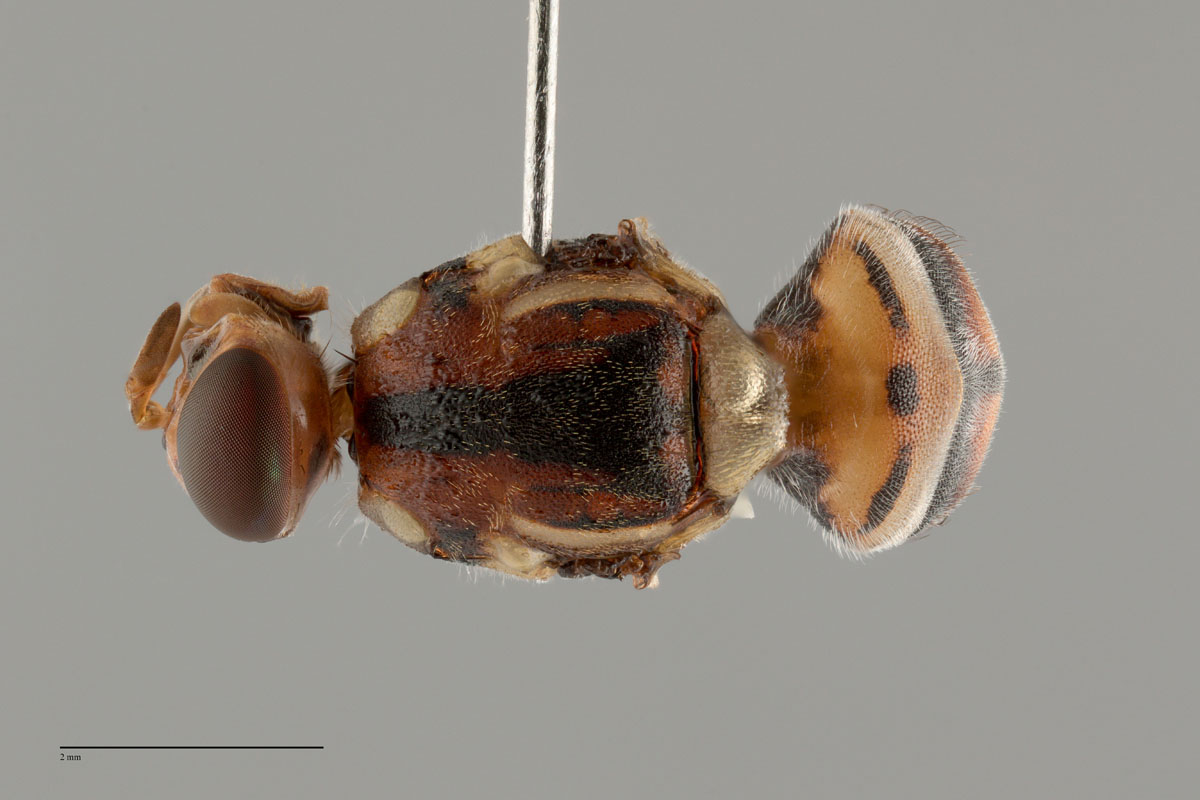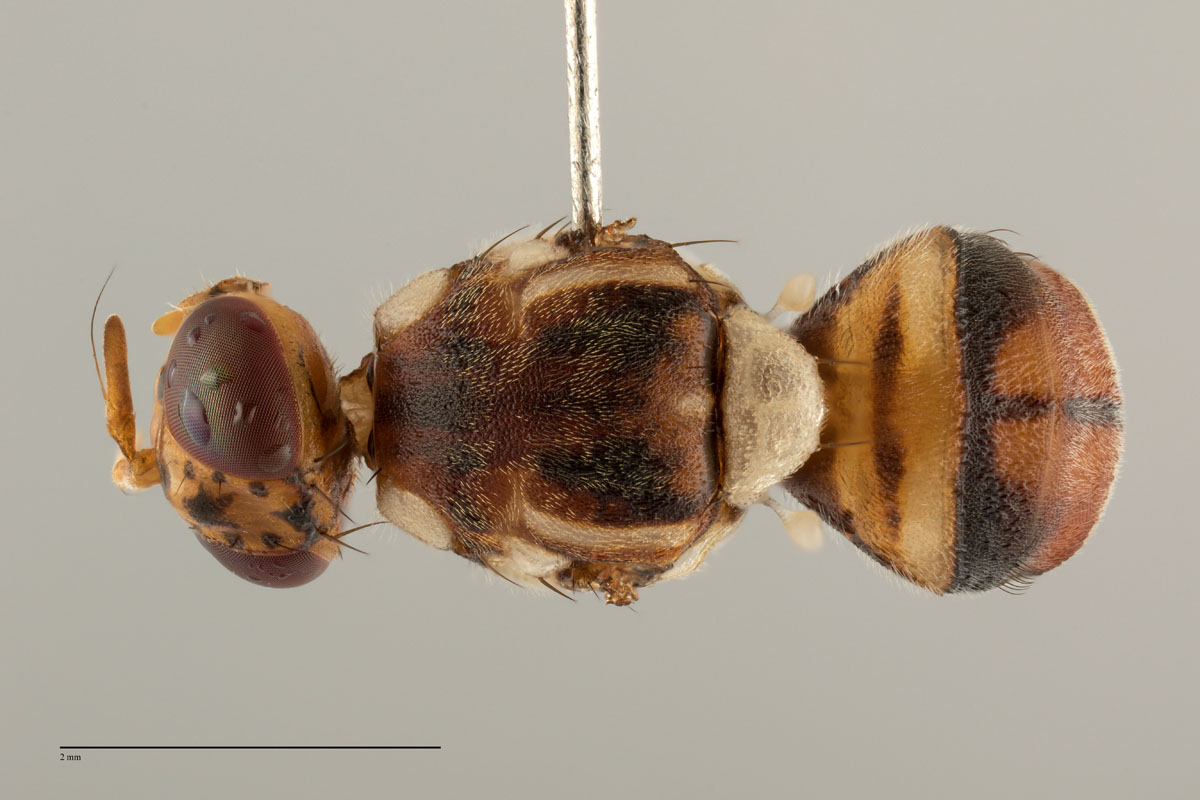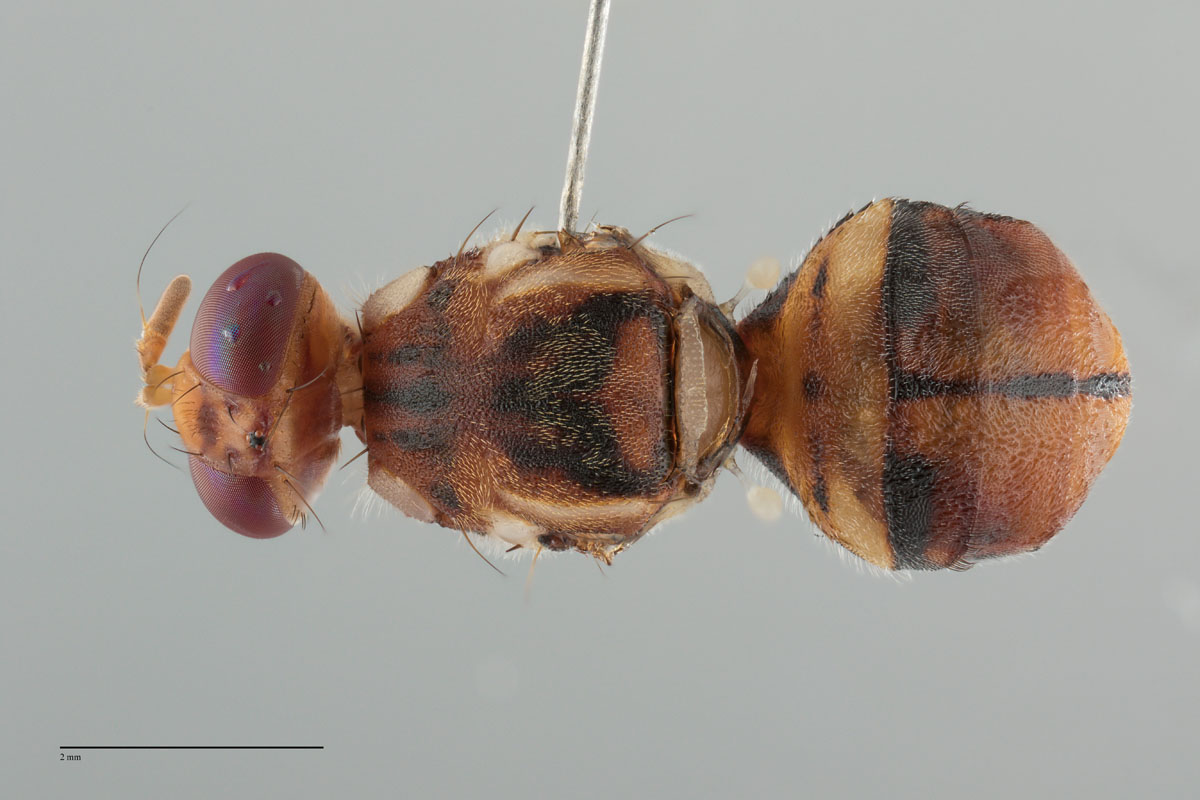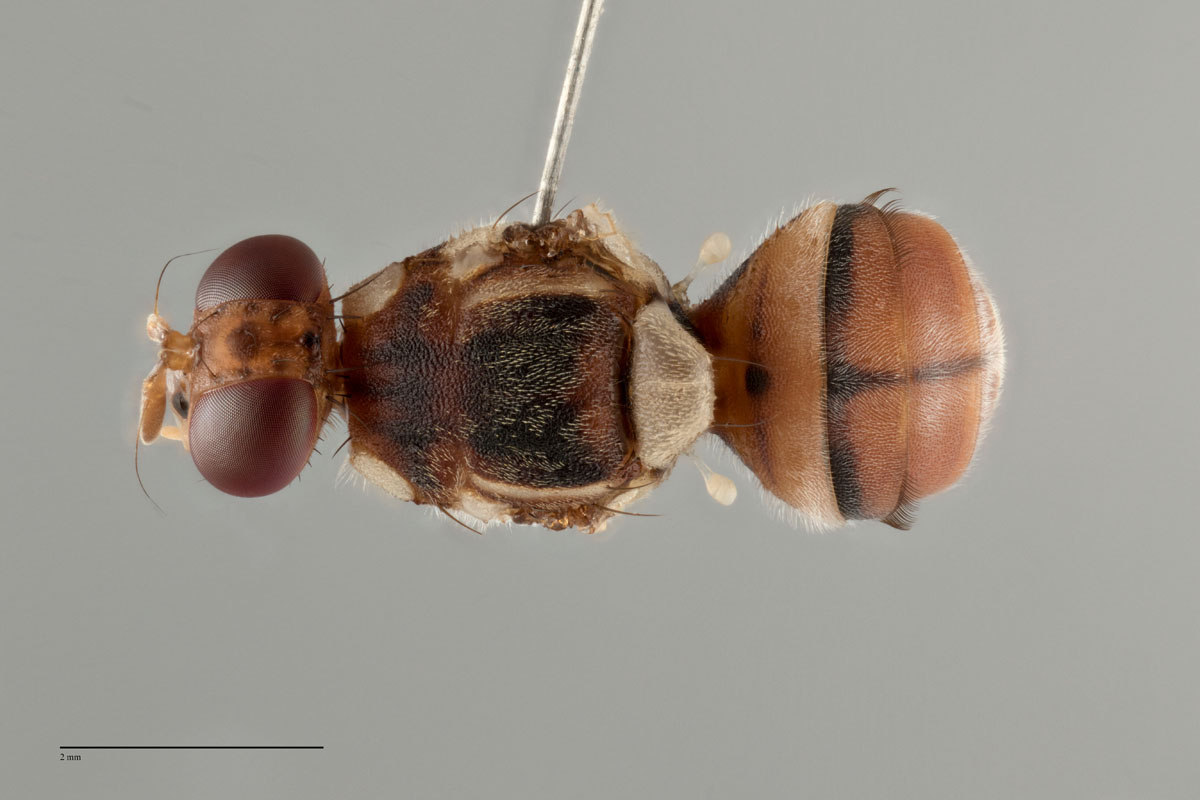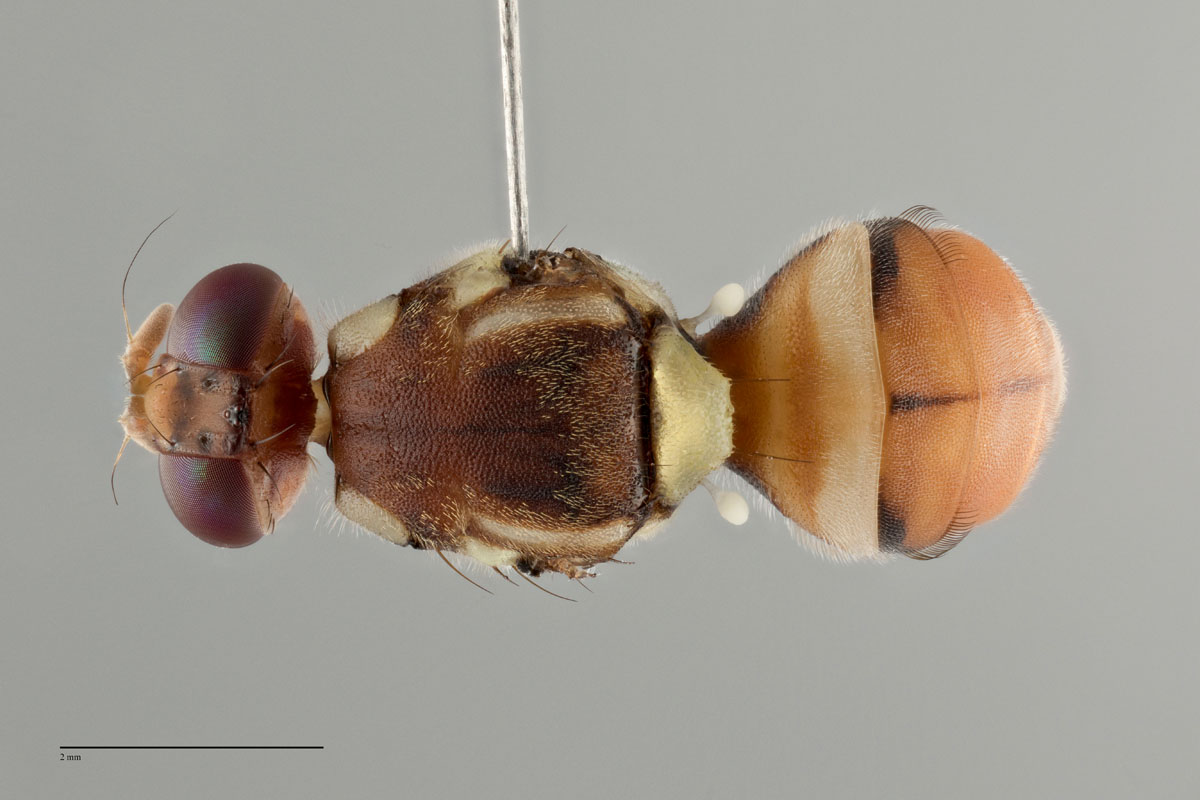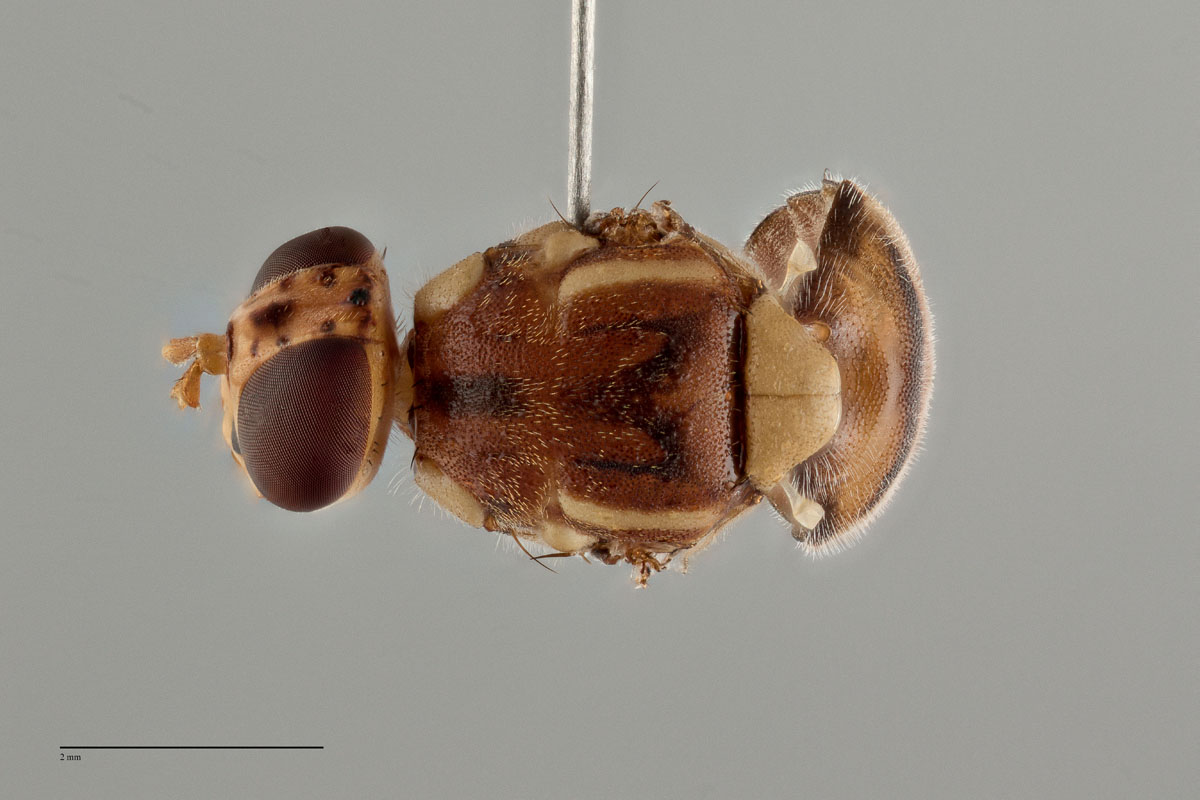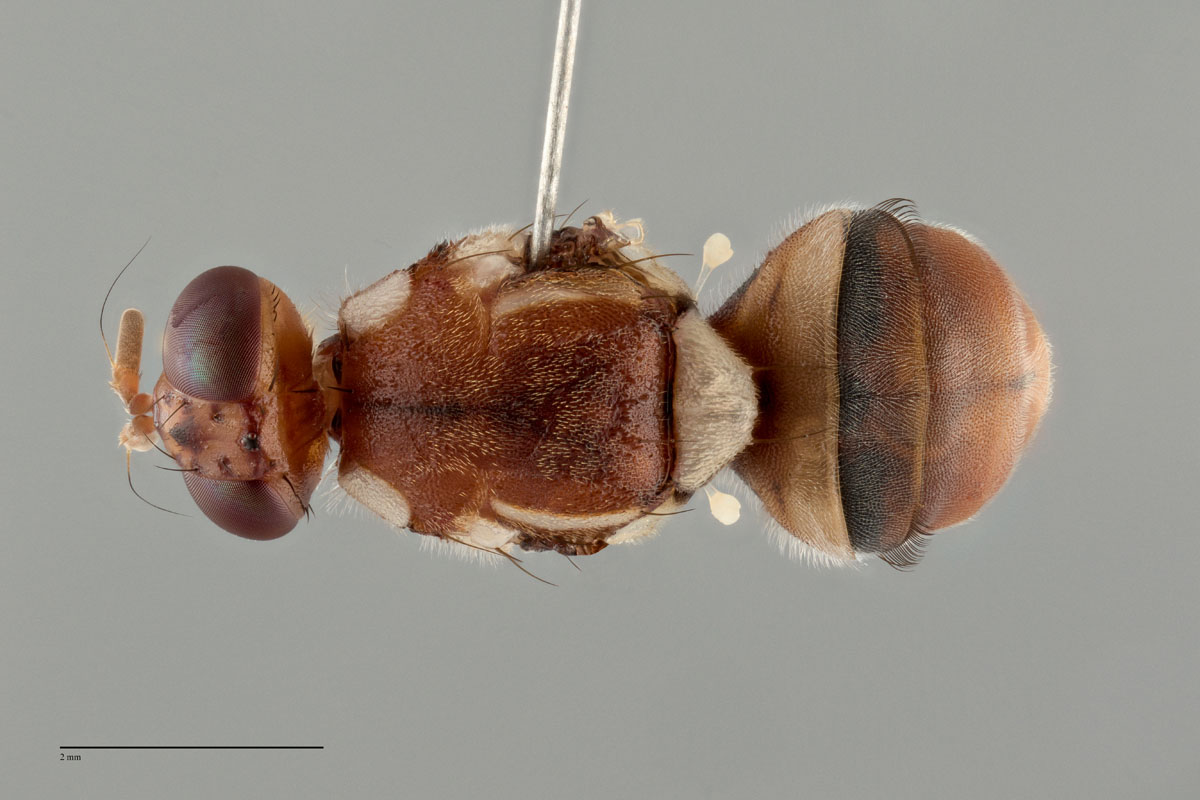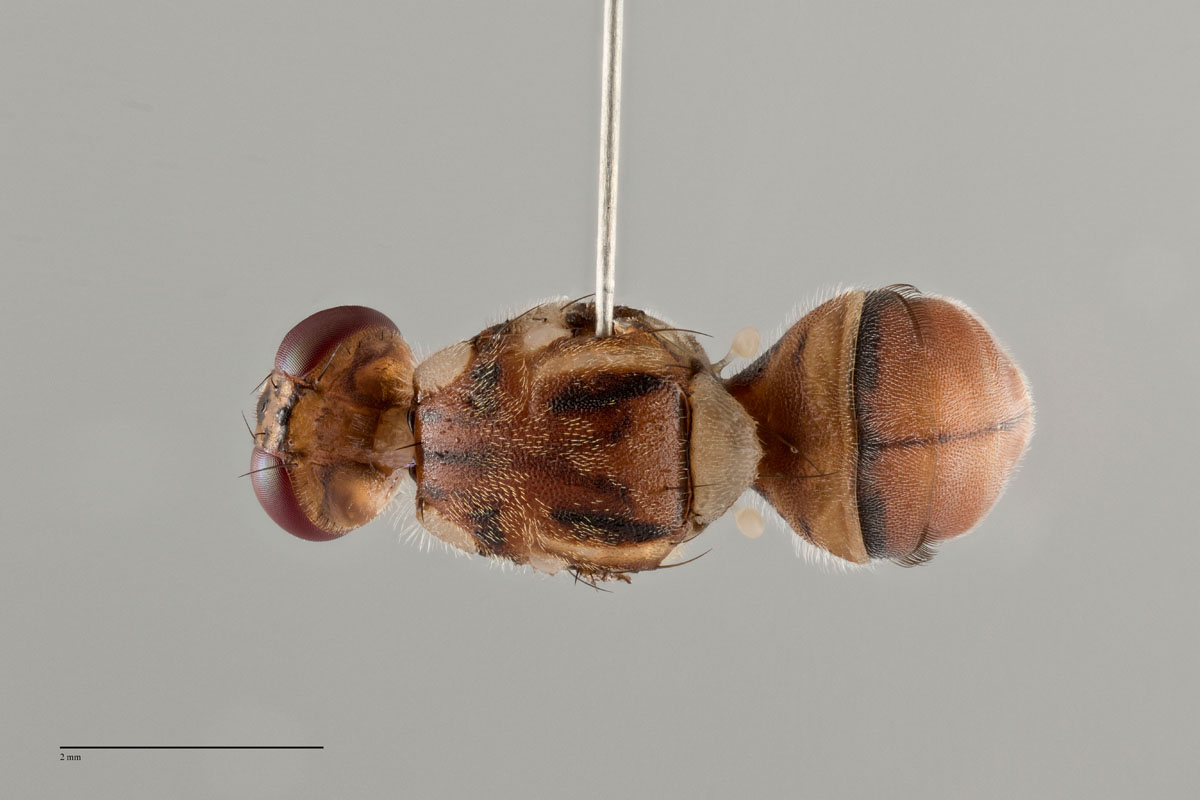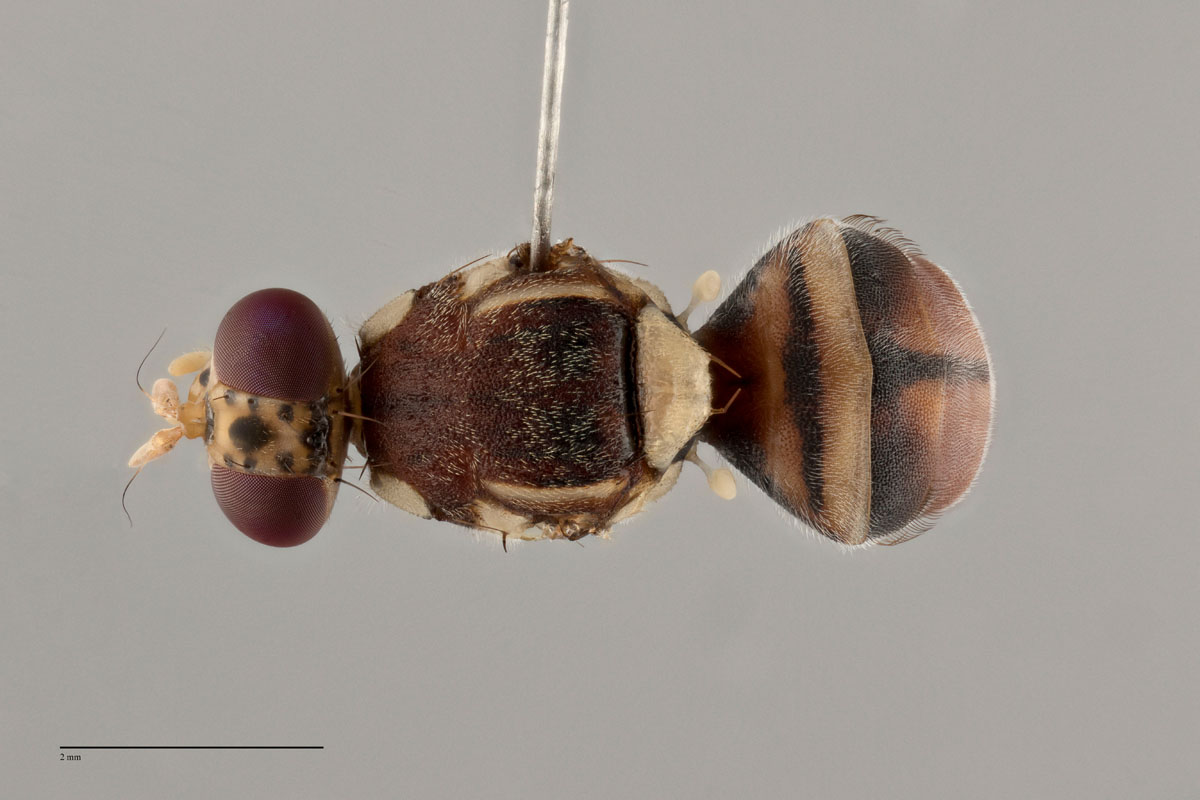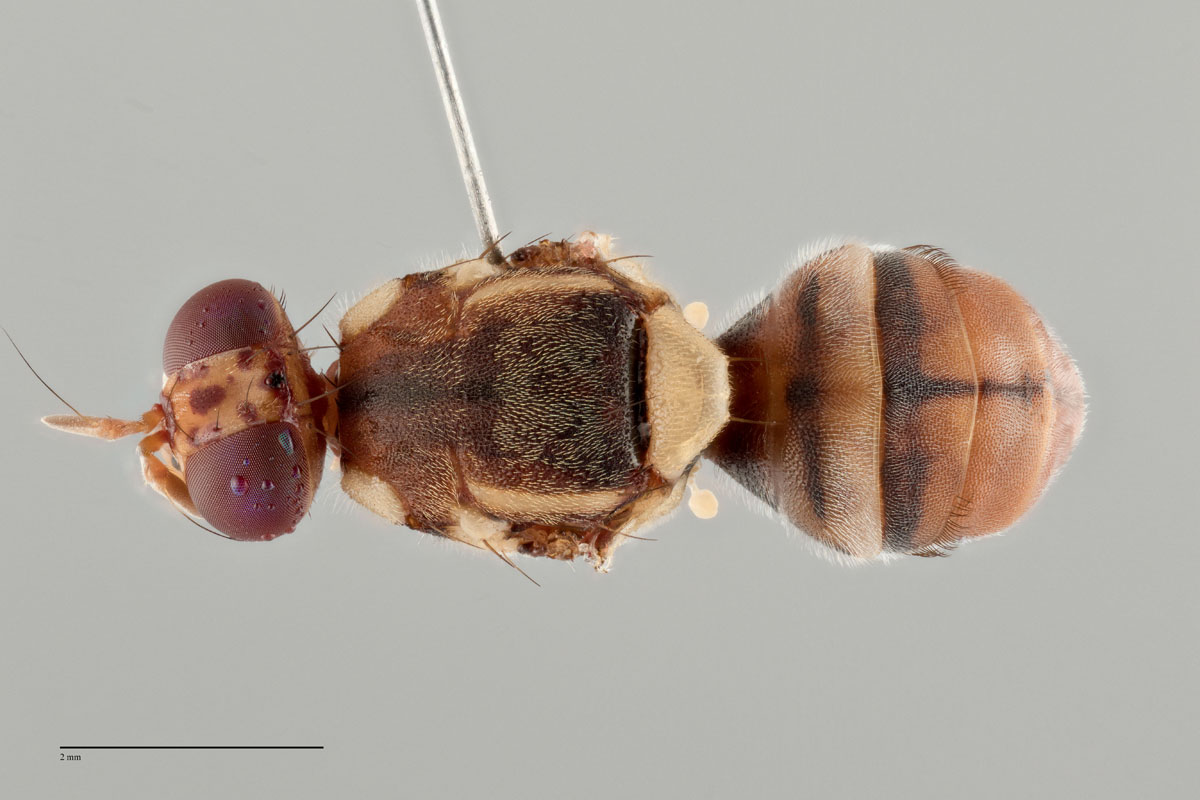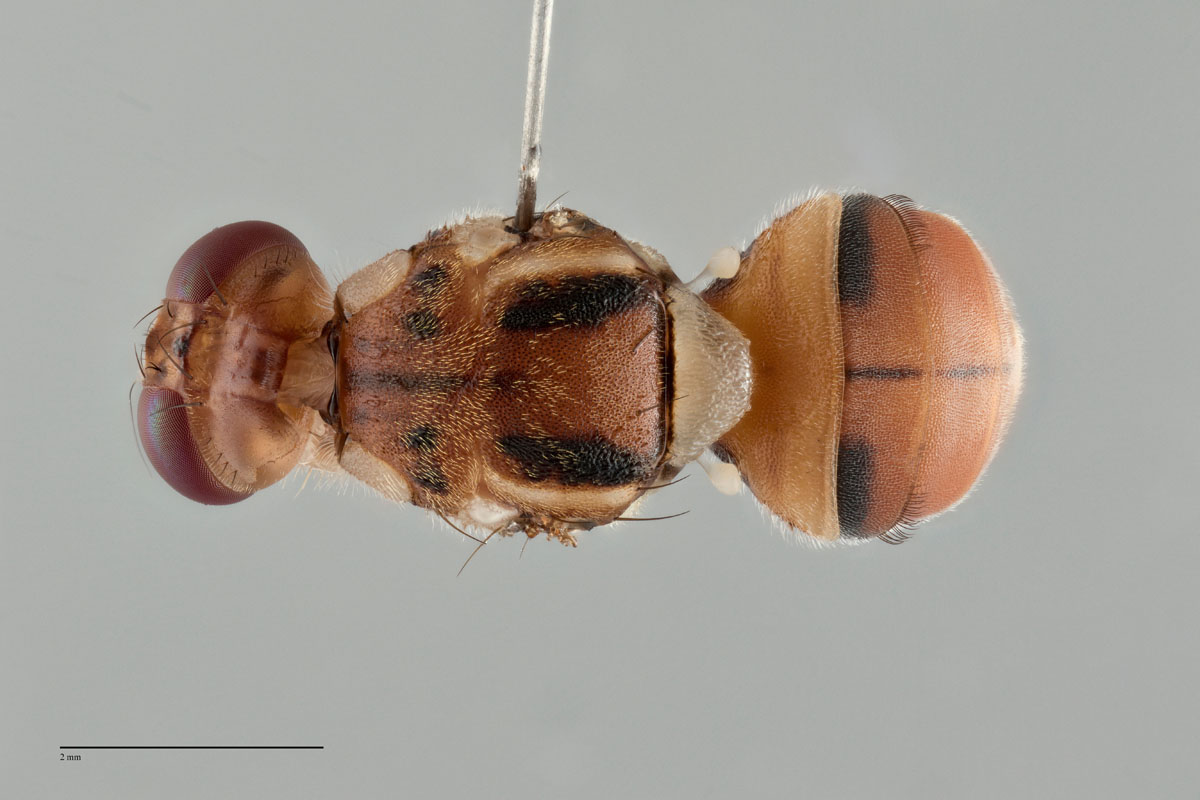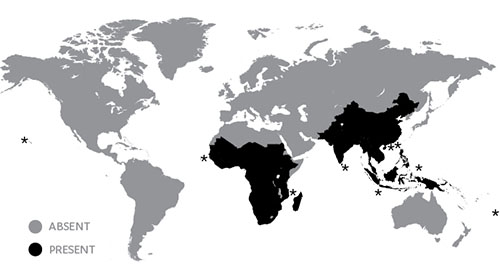Diagnosis
Morphological – adult
Features include:
- face fulvous with a pair of medium sized circular black spots
- scutum colour variable red-brown to black, with lanceolate dark patterning in intermediate forms
- postpronotal lobes and notopleura yellow
- mesopleural stripe reaching midway between anterior margin of notopleuron and anterior npl. seta dorsally
- broad parallel sided lateral postsutural vittae ending behind ia. seta
- medial postsutural vitta absent
- scutellum yellow
- legs with femora entirely fulvous, fore tibiae pale fuscous and hind tibiae fuscous
- wings with cells bc and c colourless, microtrichia in outer corner of cell c only, a narrow fuscous costal band confluent with R2+3 and remaining very narrow around apex of wing (occasionally there can be a very slight swelling around apex of R4+5), a narrow pale fuscous anal streak
- supernumerary lobe of medium development
- abdominal terga III-V exhibits a range of colour patterns (see Drew and Hancock 1994) but possesses the basic pattern of a black ‘T’ consisting of a narrow transverse black band across anterior margin of tergum III, a narrow medial longitudinal black band over all three terga, narrow anterolateral fuscous to dark fuscous corners on terga IV and V
- a pair of oval orange-brown to pale fuscous shining spots on tergum V
- abdominal sterna dark coloured
- posterior lobe of male surstylus short
- female with aculeus tip needle shaped (Schutze et al. 2015).
Morphological – larvae
See White and Elson-Harris 1992 p. 190.
Molecular
DNA barcoding
BOLD reference data available.
Diagnostic to the level of the B. dorsalis species complex, but difficult to resolve amongst several other species within the complex.
COI data
B. dorsalis DRS009 Classic morphology Folmers COI
B. dorsalis DRS014 Abdomen variation Folmers COI
B. dorsalis DRS015 Abdomen variation Folmers COI
B. dorsalis DRS018 Abdomen variation Folmers COI
B. dorsalis DRS022 Scutum variation Folmers COI
B. dorsalis DRS023 Abdomen variation Folmers COI
B. dorsalis DRS024 Abdomen variation Folmers COI
B. dorsalis DRS026 Abdomen variation Folmers COI
B. dorsalis DRS027 Abdomen variation Folmers COI
B. dorsalis DRS029 Abdomen/Scutum variation Folmers COI
B. dorsalis DRS049 Abdomen variation Folmers COI
B. dorsalis DRS050 Classic morphology Folmers COI
B. dorsalis DRS051 Classic morphology Folmers COI
B. dorsalis DRS052 Classic morphology Folmers COI
B. dorsalis DRS053 Classic morphology Folmers COI
B. dorsalis DRS056 Classic morphology Folmers COI
B. dorsalis DRS057 Classic morphology Folmers COI
B. dorsalis DRS2 Classic morphology Folmers COI
EIF3L data
B. dorsalis DRS014 Abdomen variation EIF3L
B. dorsalis DRS017 Abdomen/Scutum variation EIF3L
B. dorsalis DRS024 Abdomen variation EIF3L
B. dorsalis DRS052 Classic specimen EIF3L
B. dorsalis DRS053 Classic specimen EIF3L
B. dorsalis DRS056 Classic specimen EIF3L
B. dorsalis DRS058 Classic specimen EIF3L
B. dorsalis DRS2 Classic specimen EIF3L
FCOI data
B. dorsalis DRS017 Abdomen/Scutum variation FCOI
B. dorsalis DRS018 Abdomen variation FCOI
B. dorsalis DRS058 Classic specimen FCOI
RPA2 data
B. dorsalis DRS009 Classic morphology RPA2
B. dorsalis DRS014 Abdomen variation RPA2
B. dorsalis DRS024 Abdomen variation RPA2
B. dorsalis DRS049 Abdomen variation RPA2
B. dorsalis DRS050 Classic morphology RPA2
B. dorsalis DRS051 Classic morphology RPA2
B. dorsalis DRS052 Classic morphology RPA2
B. dorsalis DRS053 Classic morphology RPA2
B. dorsalis DRS056 Classic morphology RPA2
B. dorsalis DRS057 Classic morphology RPA2
B. dorsalis DRS017 Abdomen/Scutum variation RPA2
DDOSTs2 data
B. dorsalis DRS009 Classic morphology DDOSTs2
B. dorsalis DRS014 Abdomen variation DDOSTs2
B. dorsalis DRS024 Abdomen variation DDOSTs2
B. dorsalis DRS050 Classic morphology DDOSTs2
B. dorsalis DRS051 Classic morphology DDOSTs2
B. dorsalis DRS052 Classic morphology DDOSTs2
B. dorsalis DRS053 Classic morphology DDOSTs2
B. dorsalis DRS056 Classic morphology DDOSTs2
B. dorsalis DRS057 Classic morphology DDOSTs2
B. dorsalis DRS017 Abdomen/Scutum variation DDOSTs2
POP4 data
B. dorsalis DRS050 Classic morphology POP4
B. dorsalis DRS051 Classic morphology POP4
B. dorsalis DRS053 Classic morphology POP4
B. dorsalis DRS056 Classic morphology POP4
B. dorsalis DRS057 Classic morphology POP4
PCR-RFLP Test 1
BsrI: 650, 260
HinfI: 770
HhaI: 656, 192
Sau3AI: Does not cut
SnaBI: 326, 540
SspI: Does not cut
Vspl: Does not cut
Approximate ITS1 fragment length – gel: 820 bp
PCR-RFLP Test 2
No distinctive restriction enzymes but a combination of several can be chosen to distinguish the complex from other Bactrocera and species in other genera.
Choice of enzyme will be based on relative distinctiveness from other species potentially trapped. See Restriction enzyme haplotype chart and Diagnostic restriction patterns.
